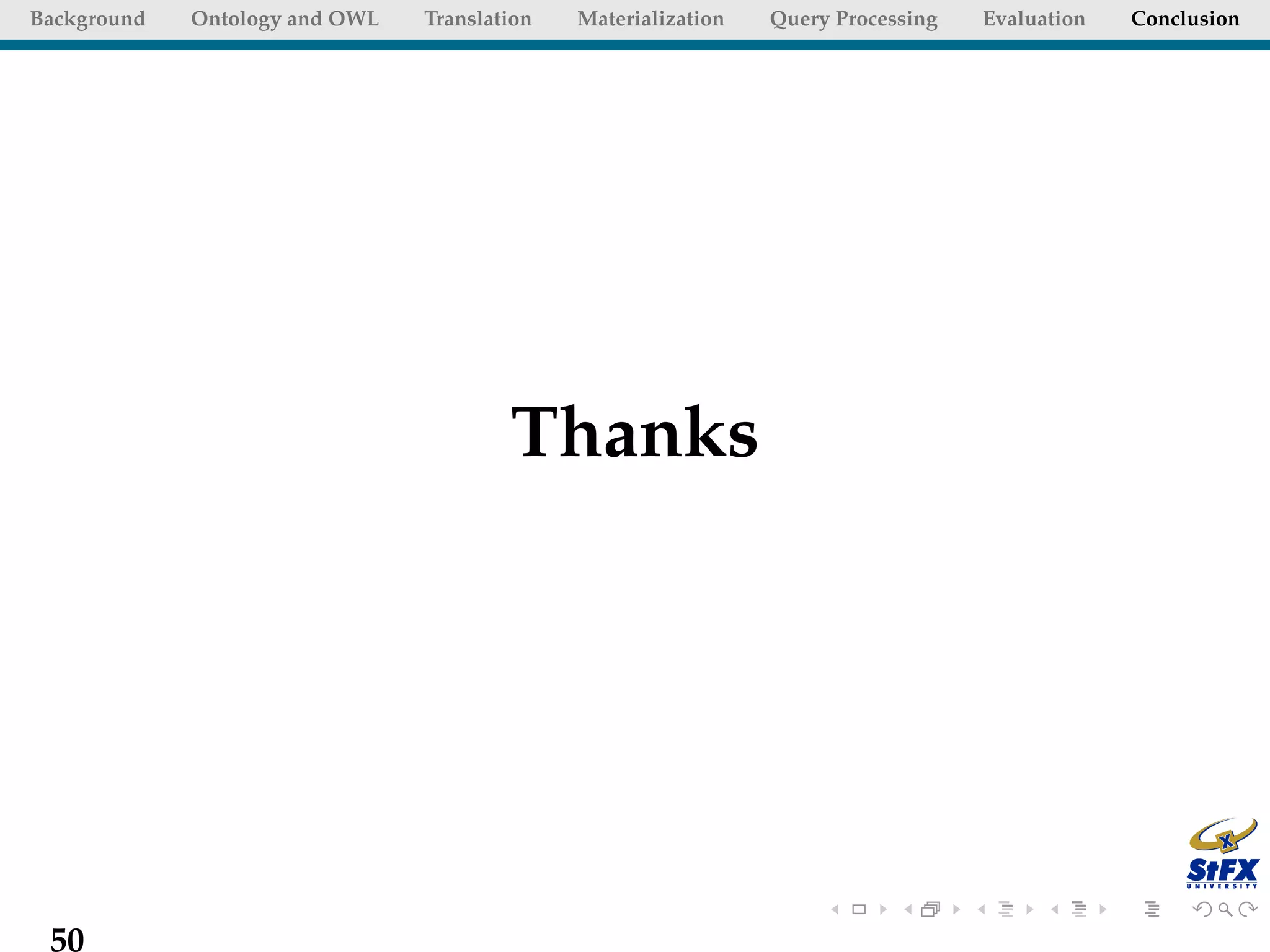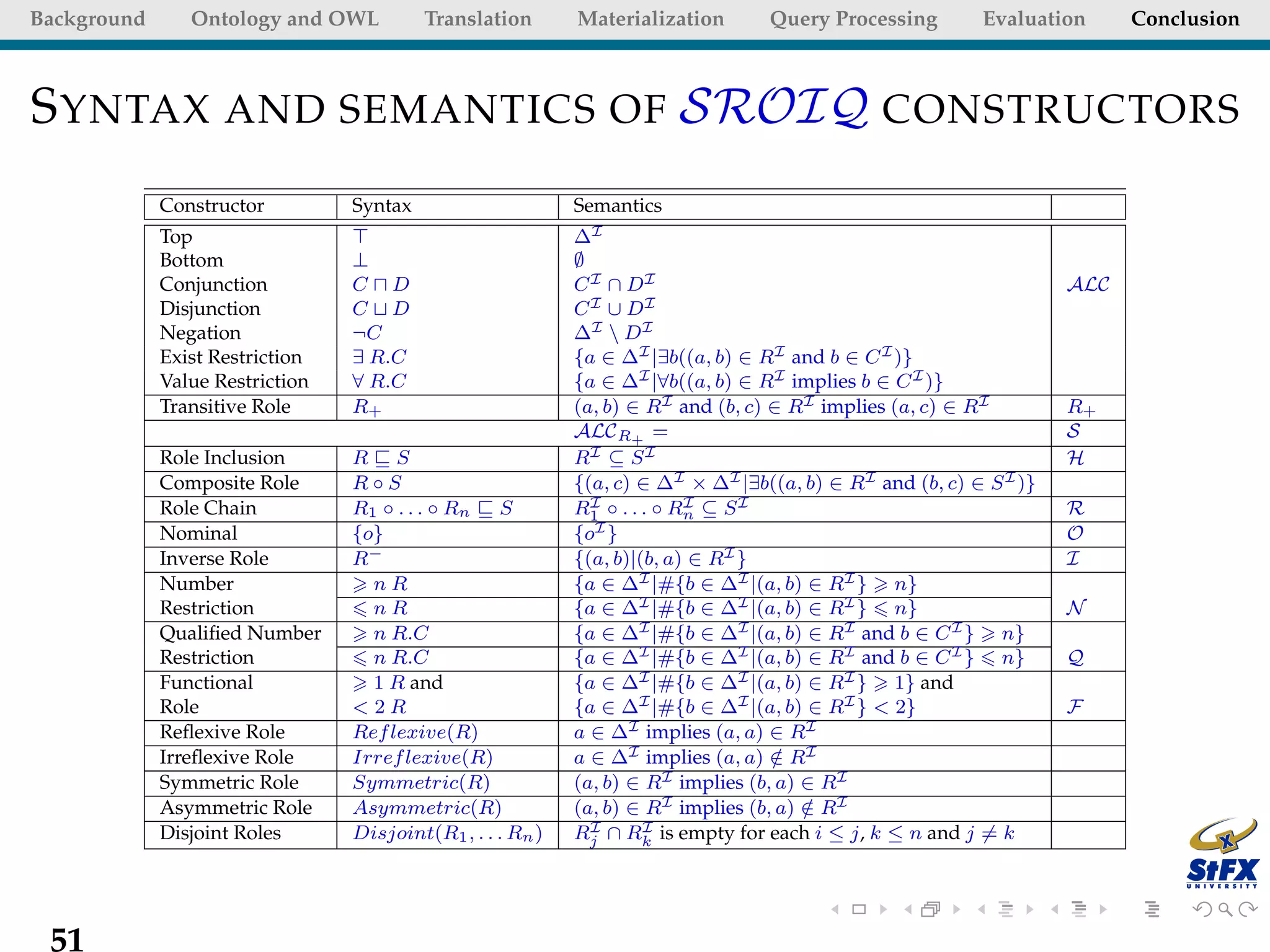The document presents an overview of a scalable reasoning system, OWLontDB, designed for OWL 2 RL ontologies, aimed at improving decision support systems in healthcare by utilizing ontologies and advanced reasoning techniques. It discusses the features of OWL 2, including increased expressive power and efficient query processing, while addressing challenges related to scalability in handling large datasets. The paper outlines the methodology for translating OWL 2 RL to datalog to enhance reasoning capabilities and ensure consistency in complex healthcare applications.
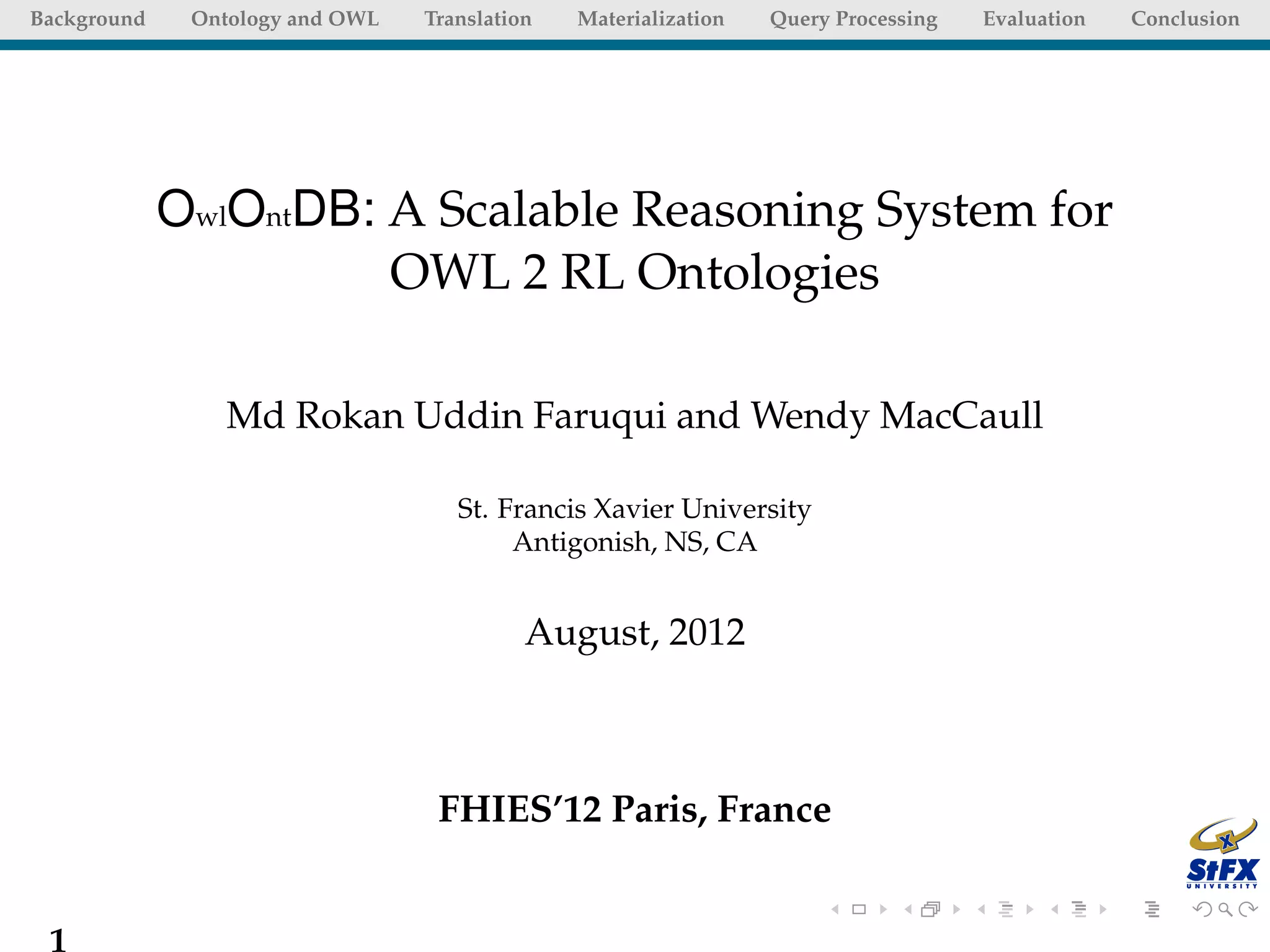

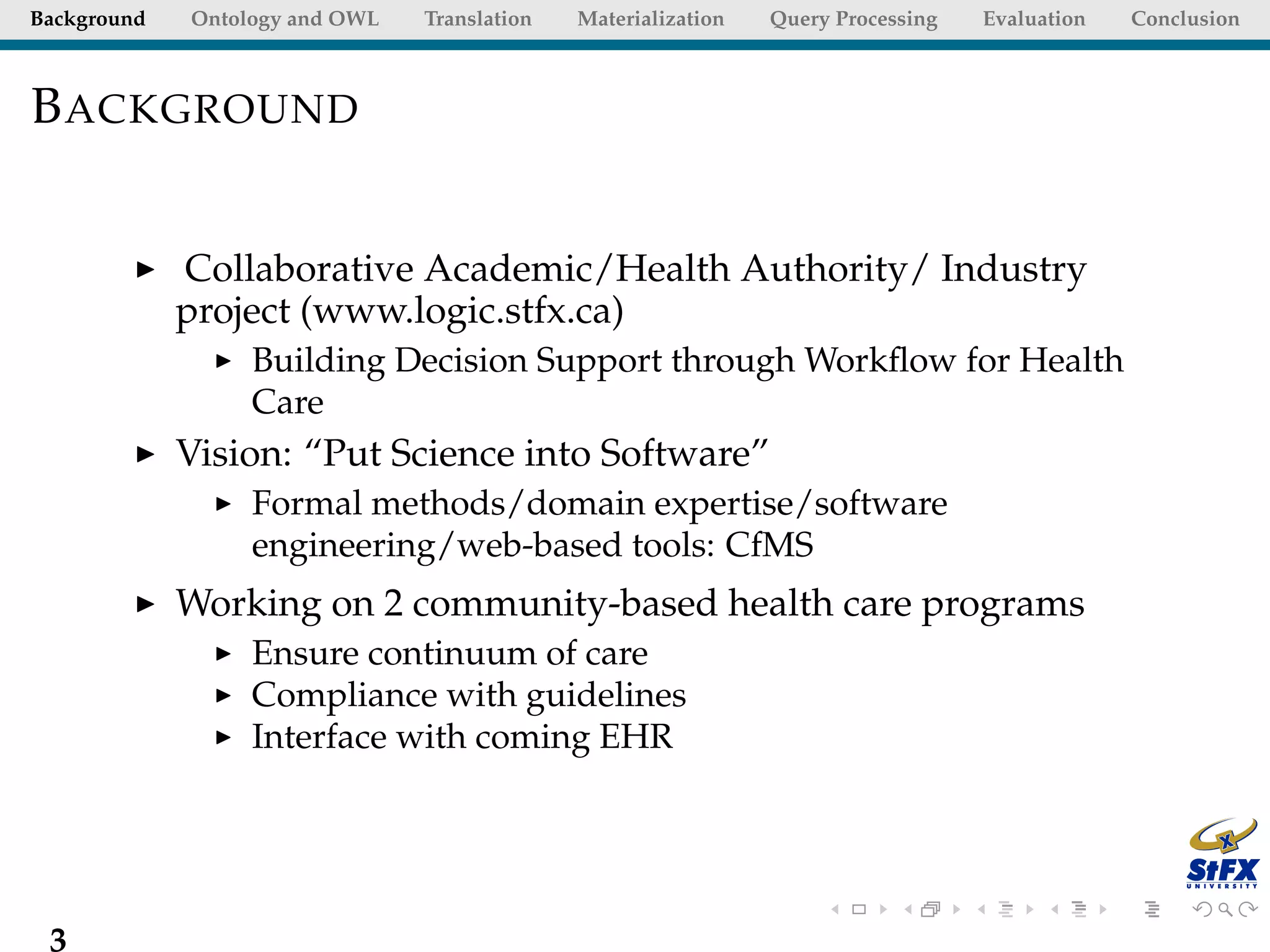
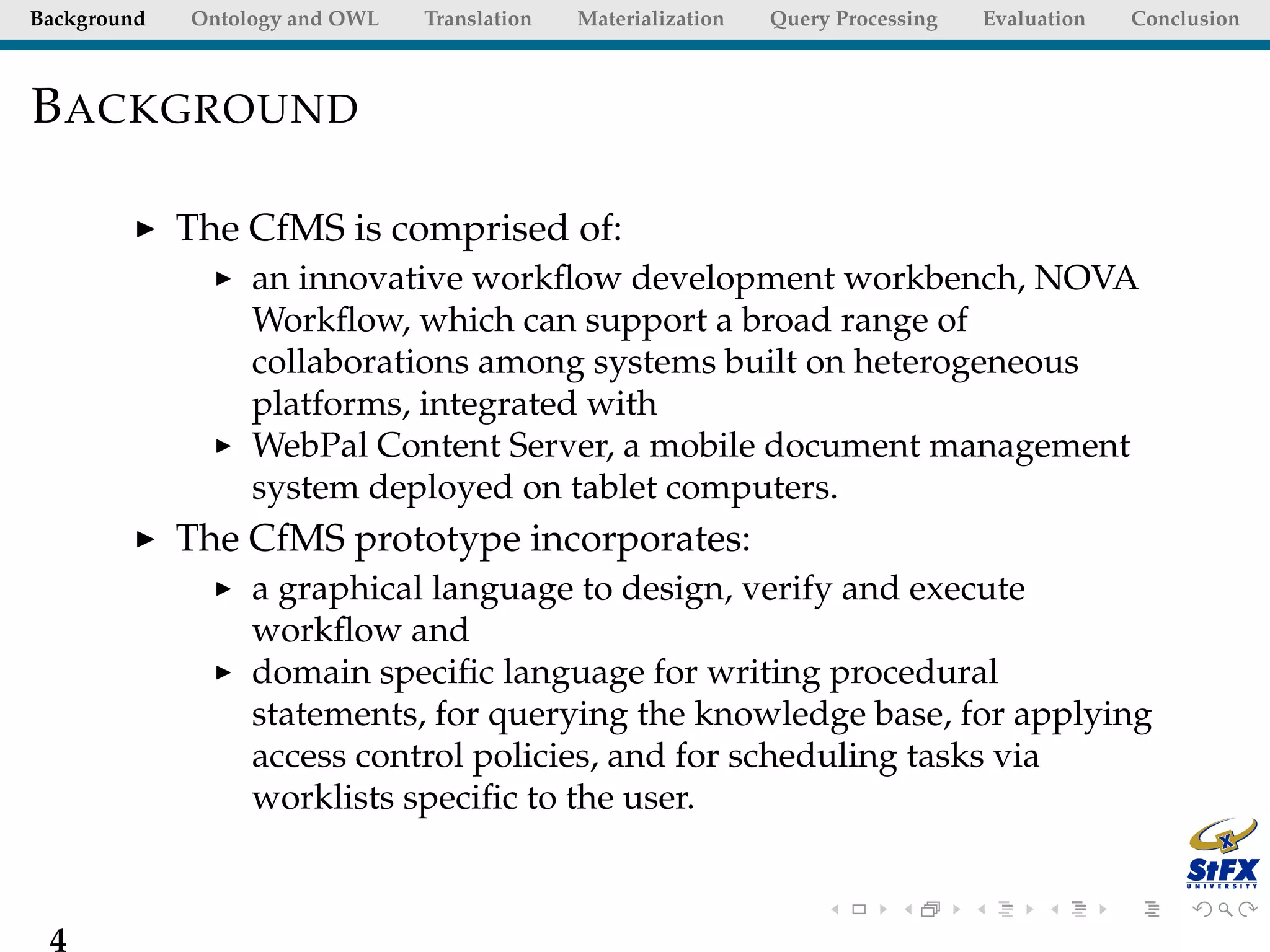
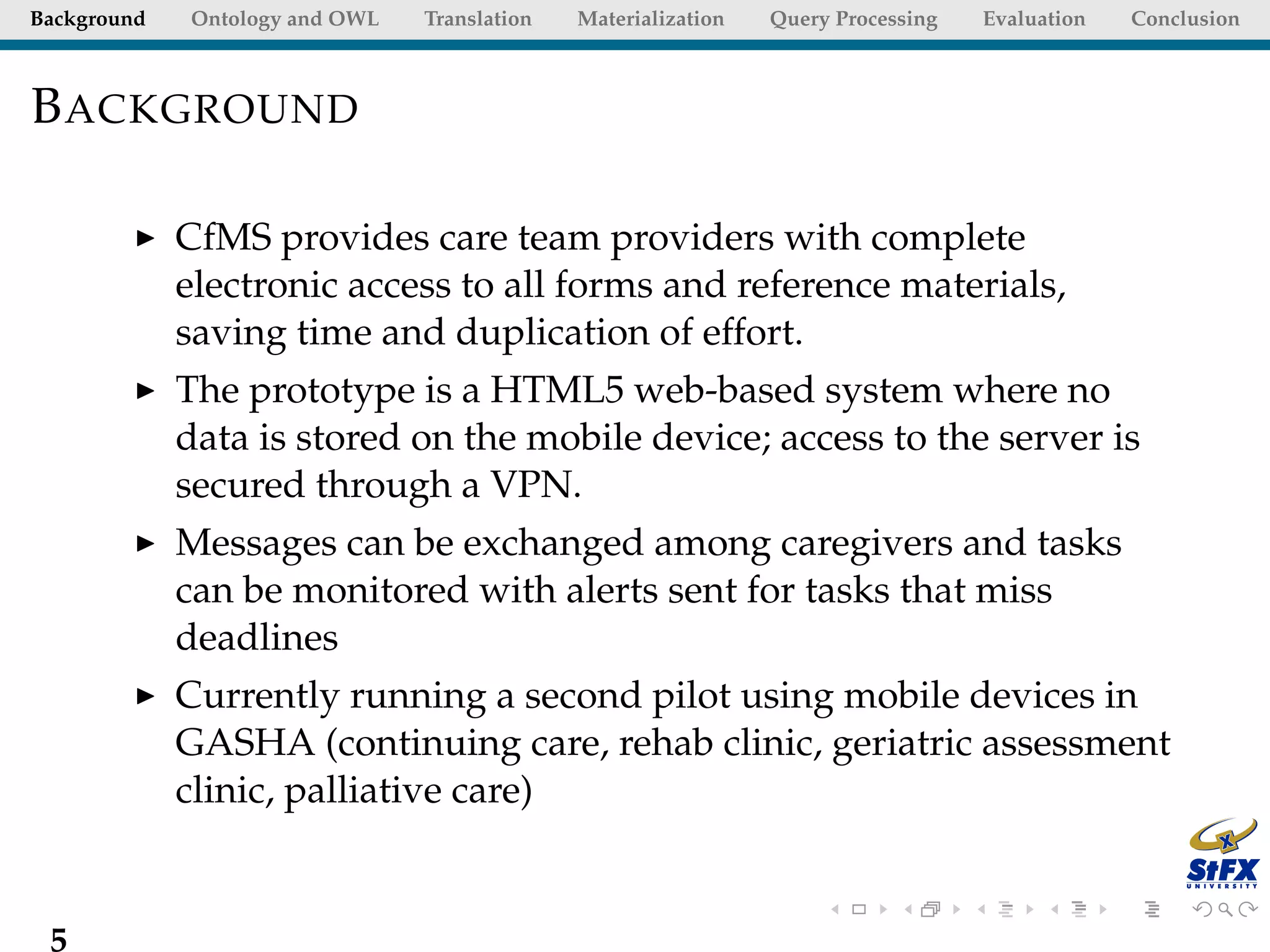
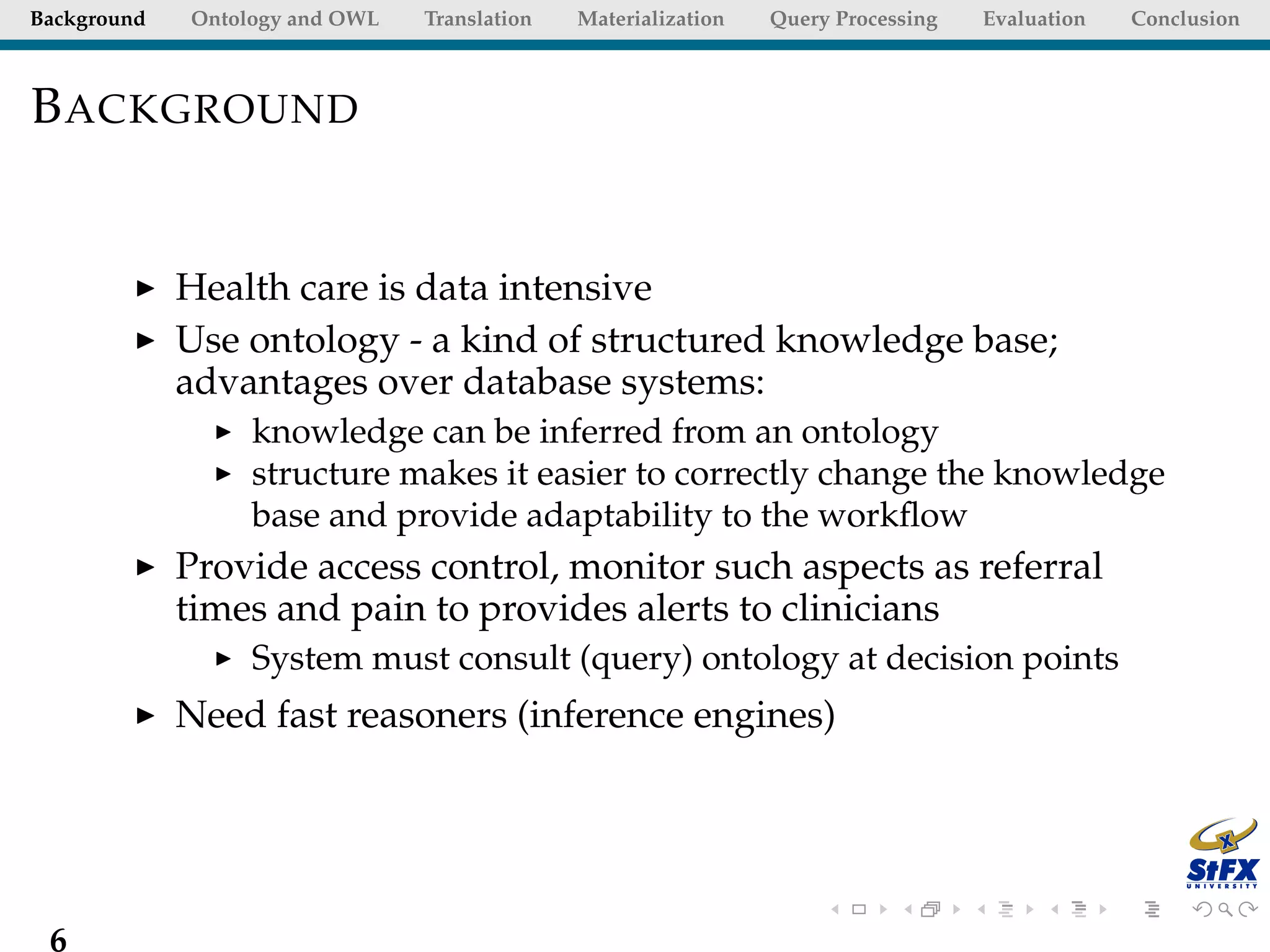
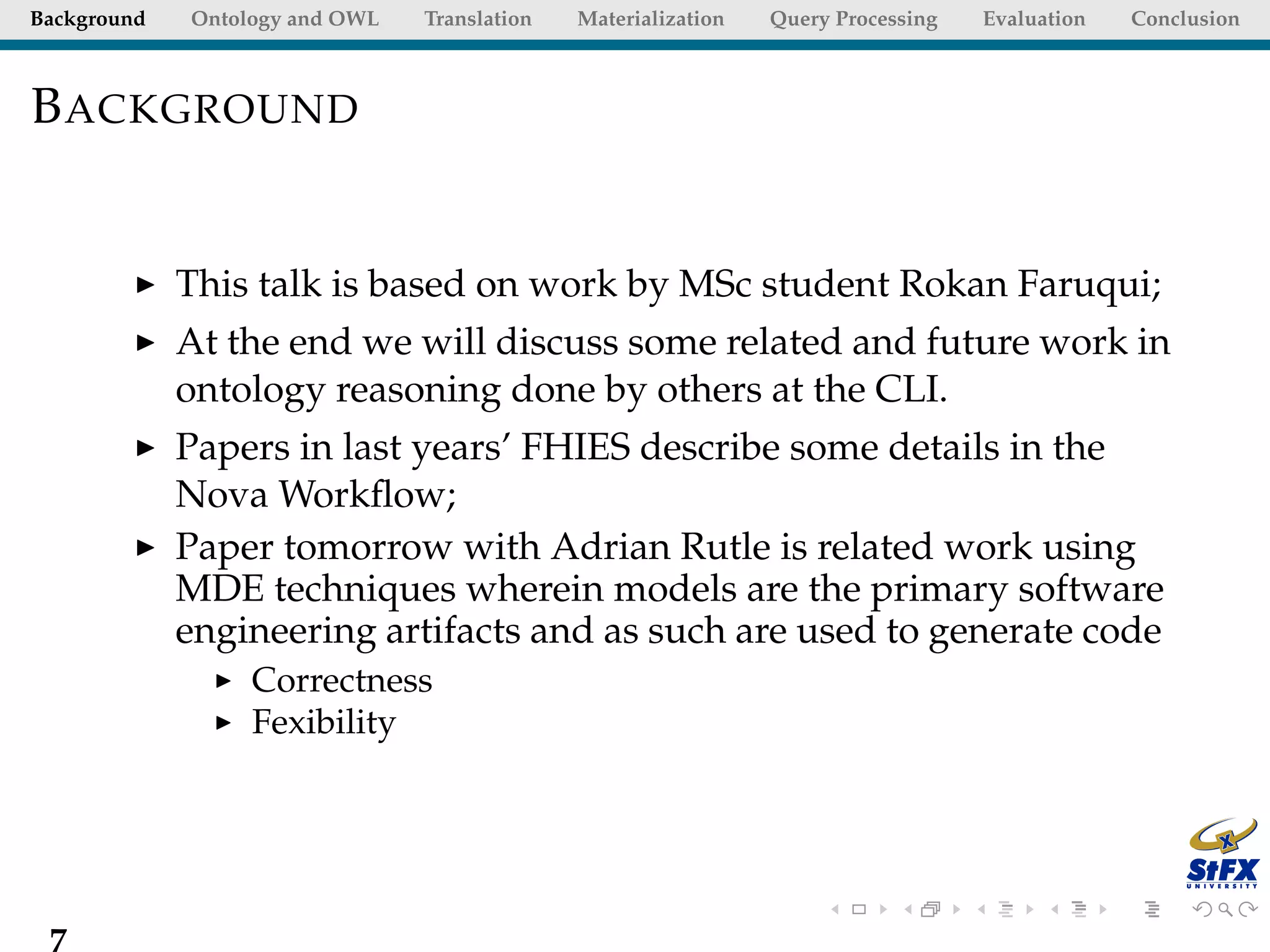
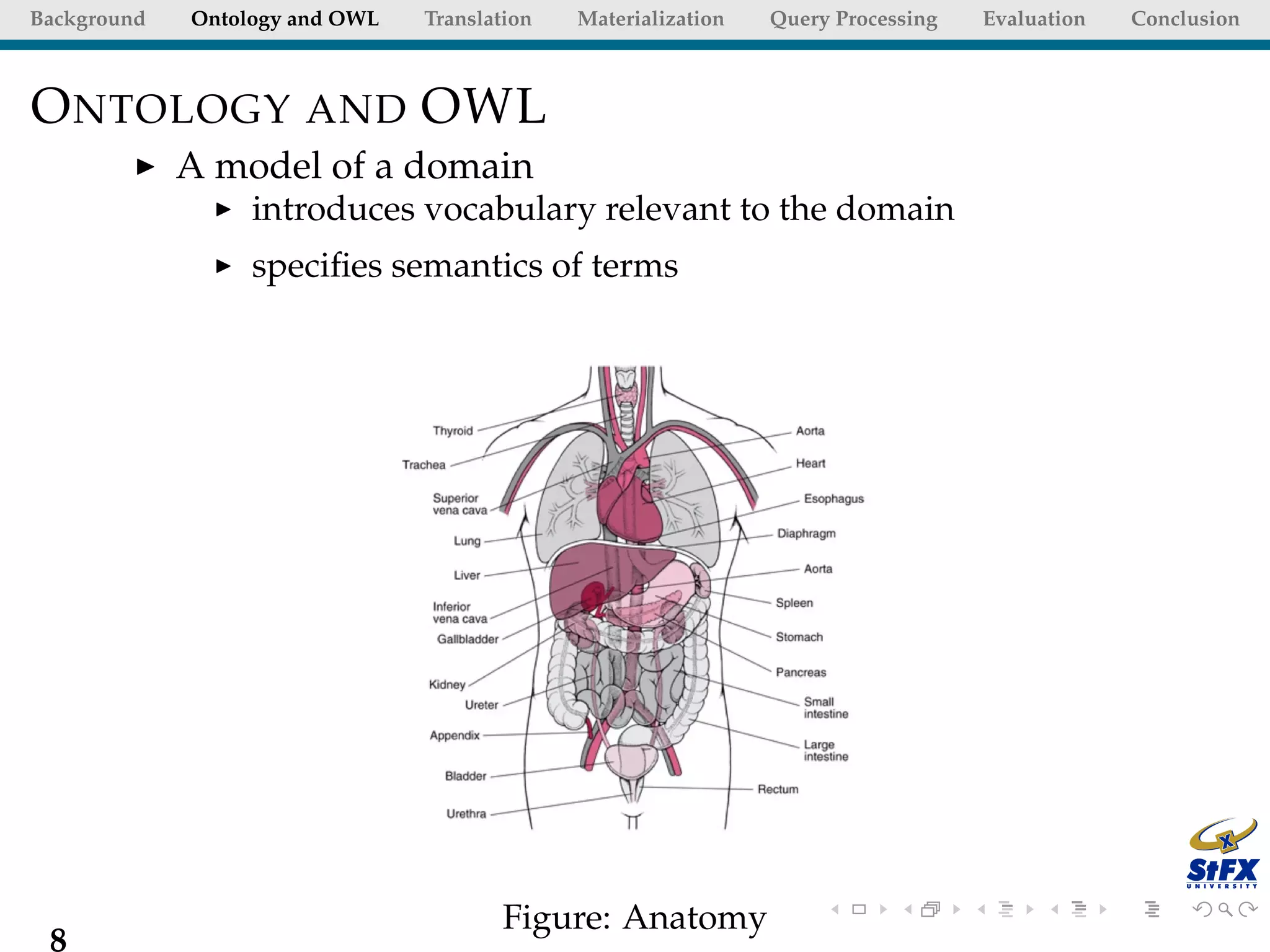

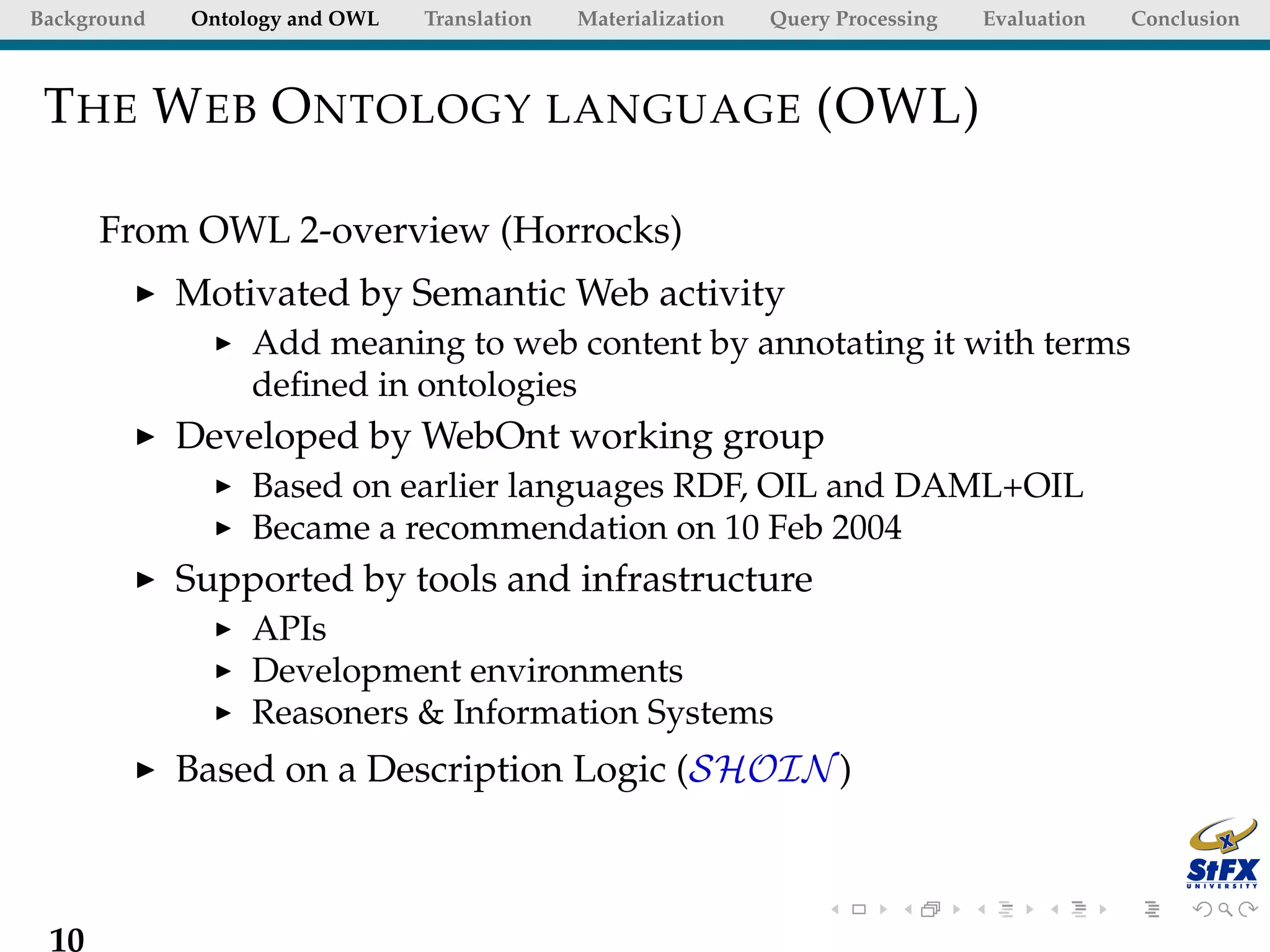
![Background Ontology and OWL Translation Materialization Query Processing Evaluation Conclusion
D ESCRIPTION L OGICS (DL S )
Fragments of first order logic designed for KR
Desirable computational properties
Decidable (essential)
Low complexity (desirable)
Succinct and quantifier free syntax
∀x.[Heart(x) → M uscularOrgan(x) ∧ ∃y.[isP artOf (x, y)
∧CirculatorySystem(y)]]
Heart MuscularOrgan ∃ isPartOf .CirculatorySystem
11](https://image.slidesharecdn.com/fhiesowlontdb-130205121850-phpapp02/75/OwlOntDB-A-Scalable-Reasoning-System-for-OWL-2-RL-Ontologies-with-Large-ABoxes-11-2048.jpg)

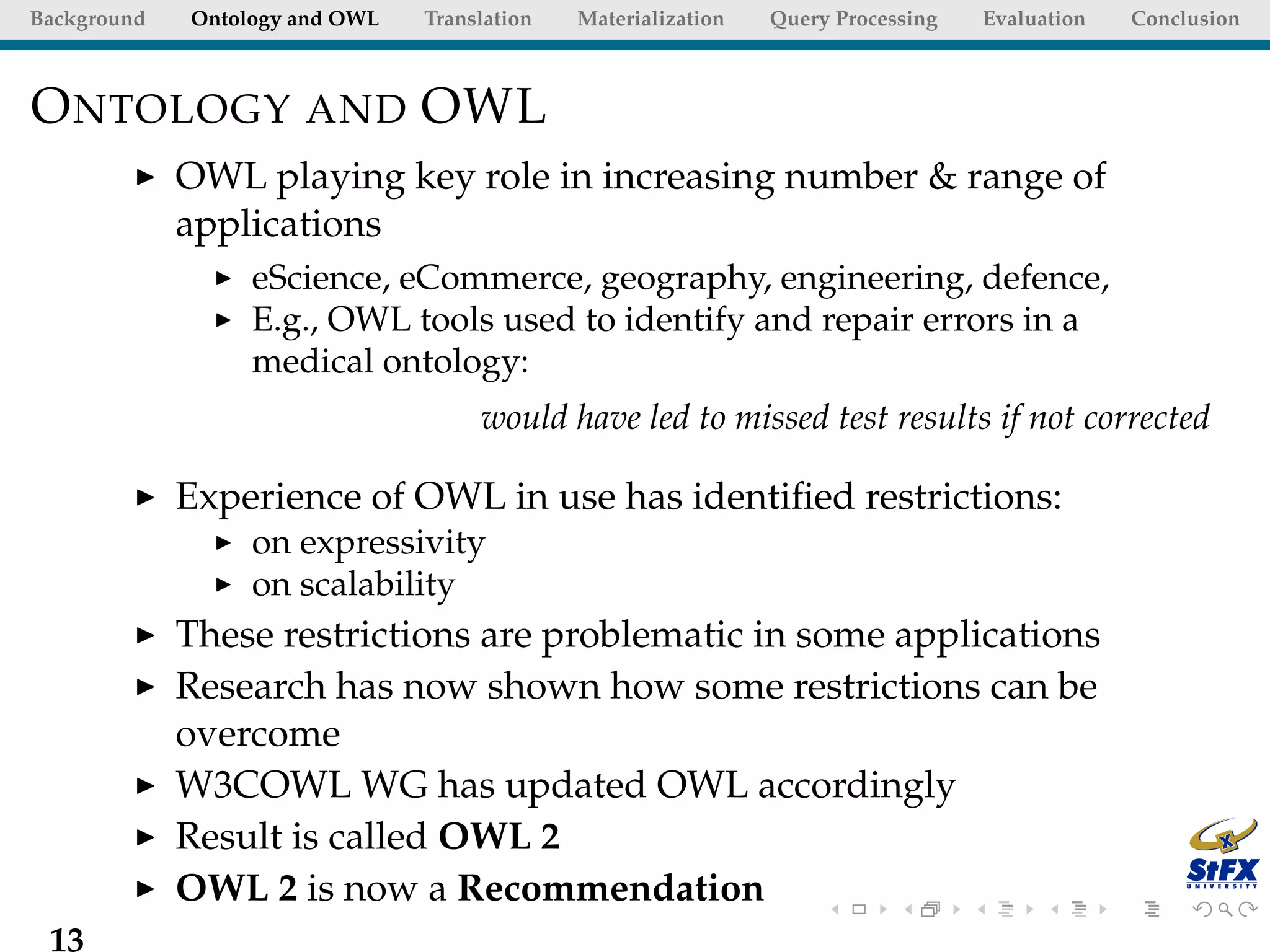
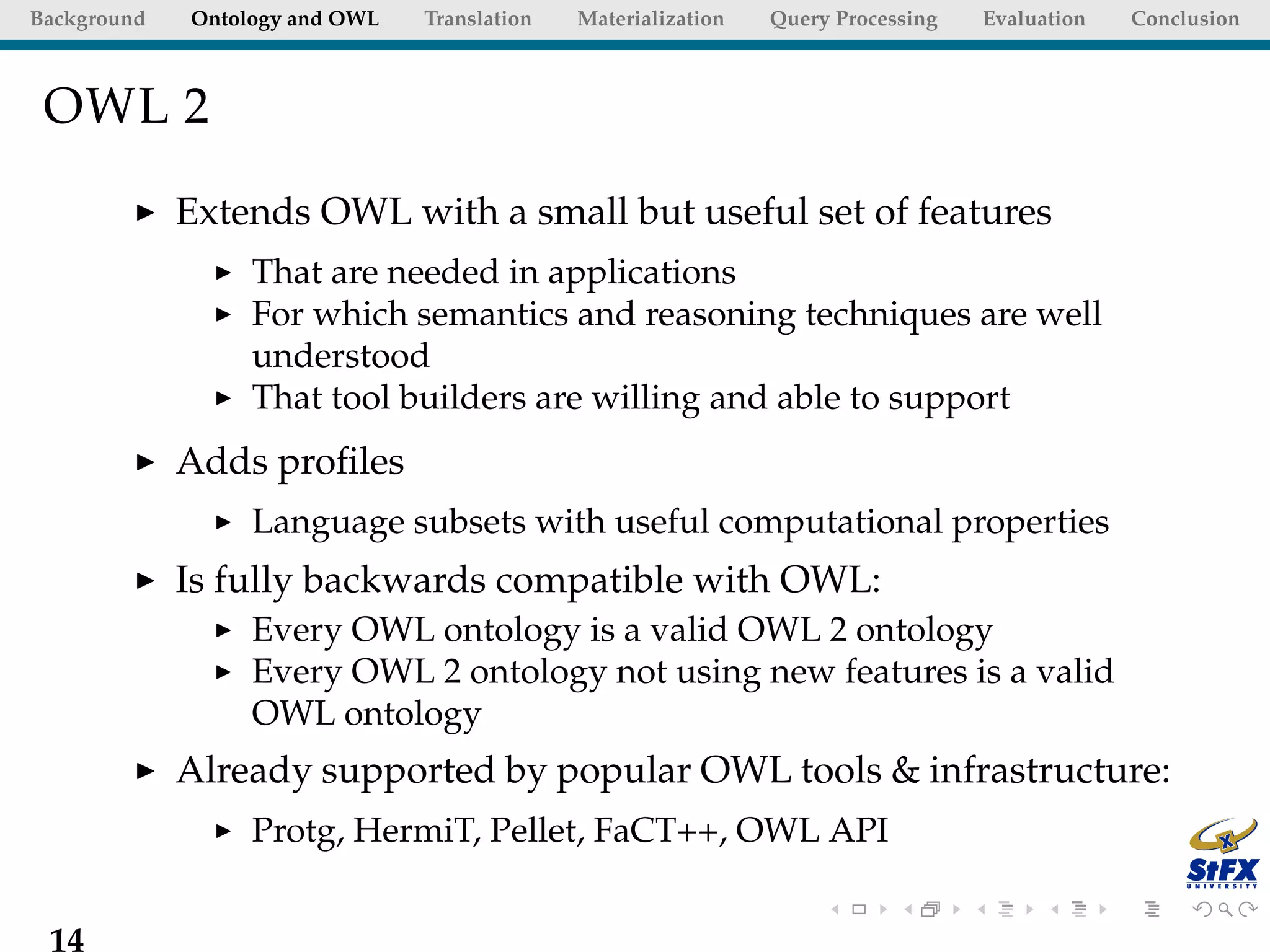

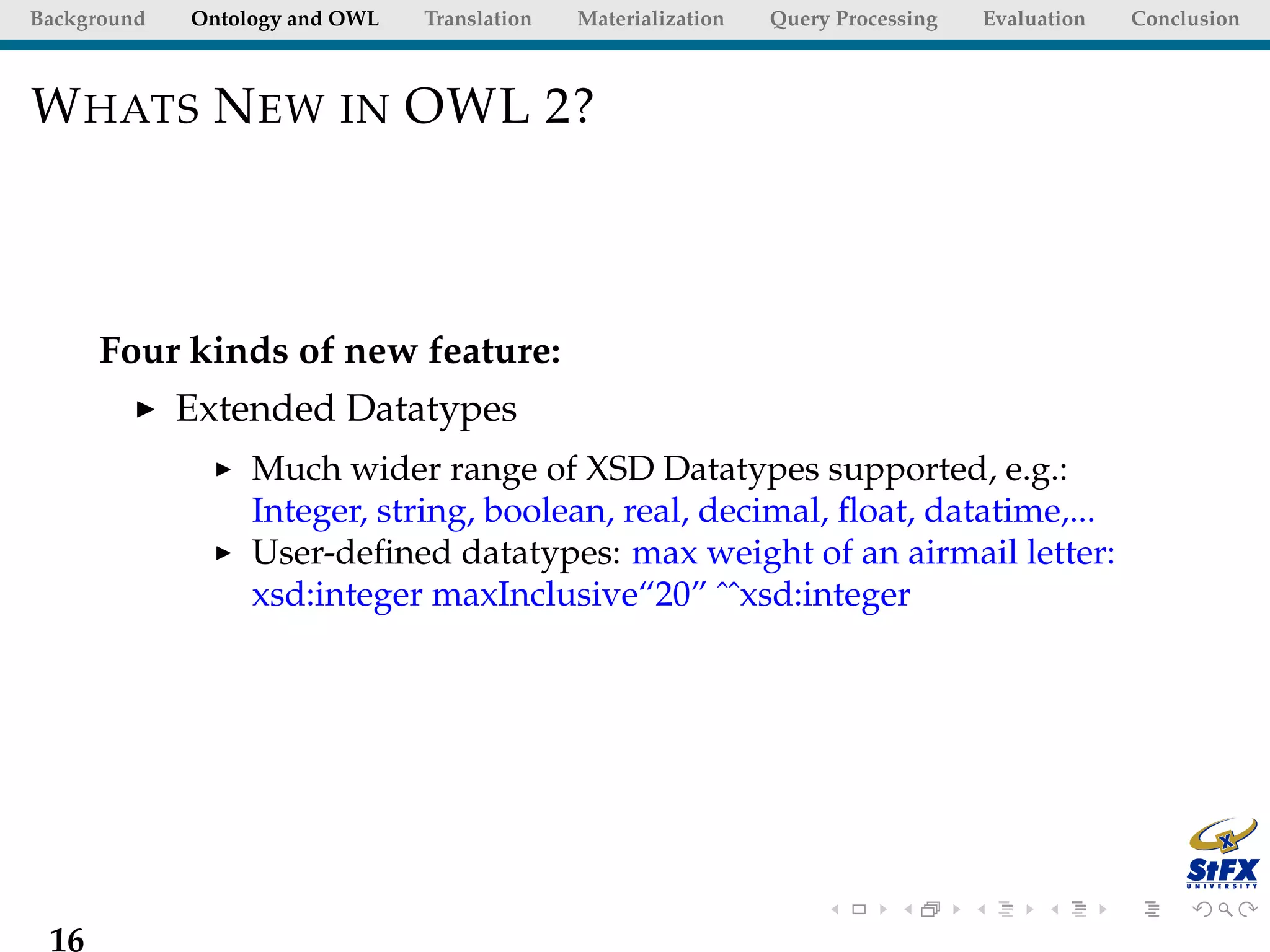
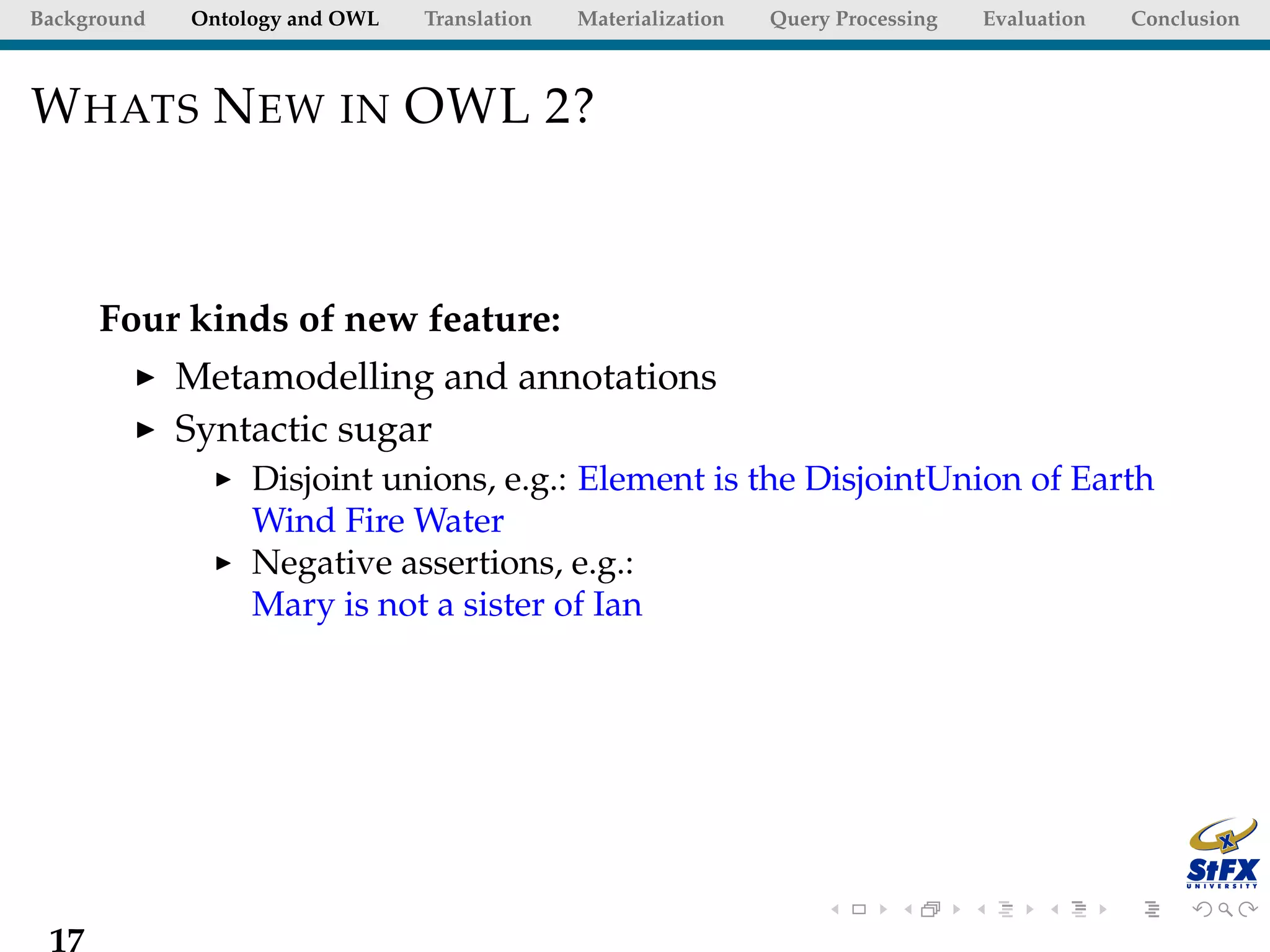
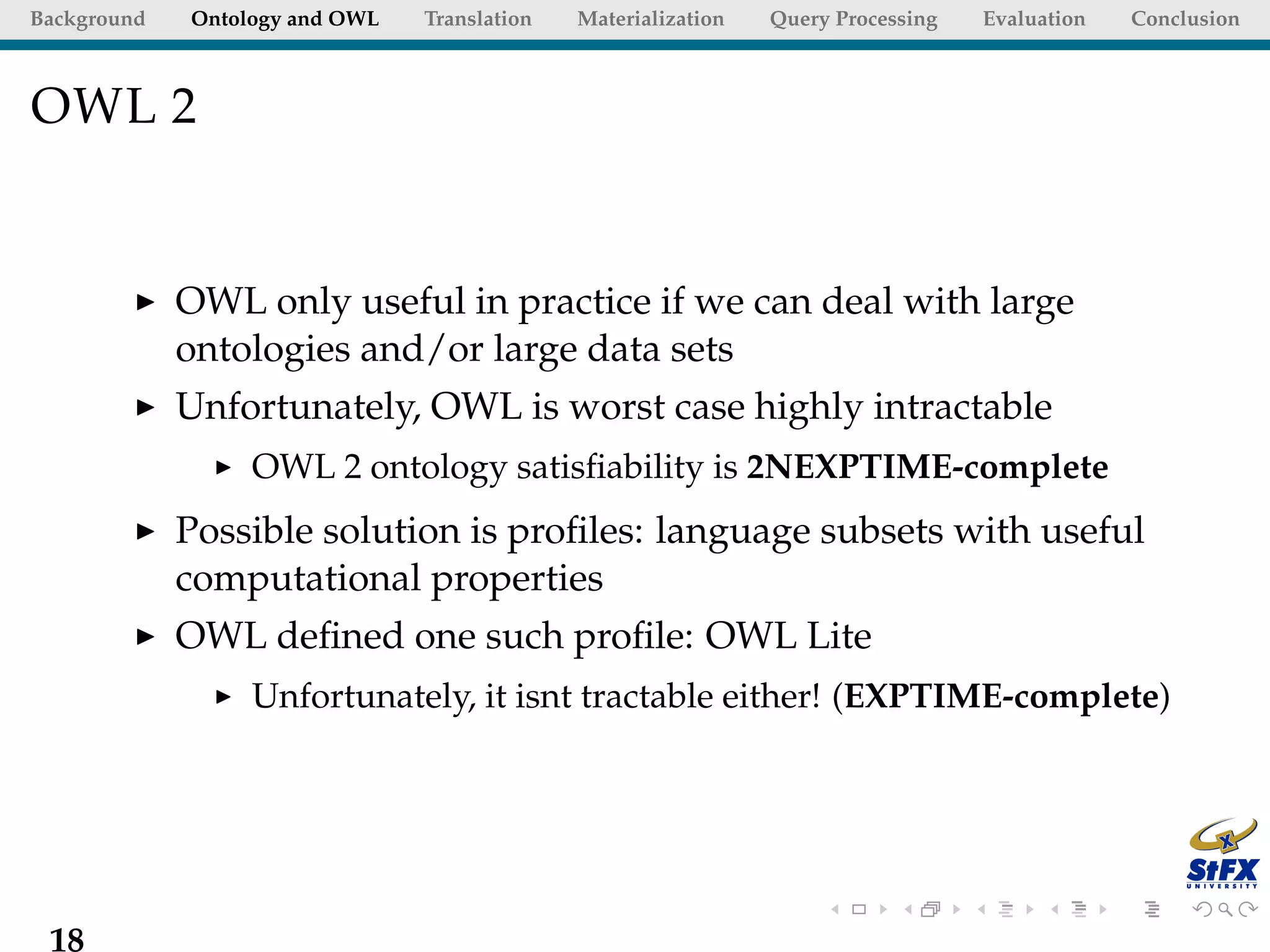
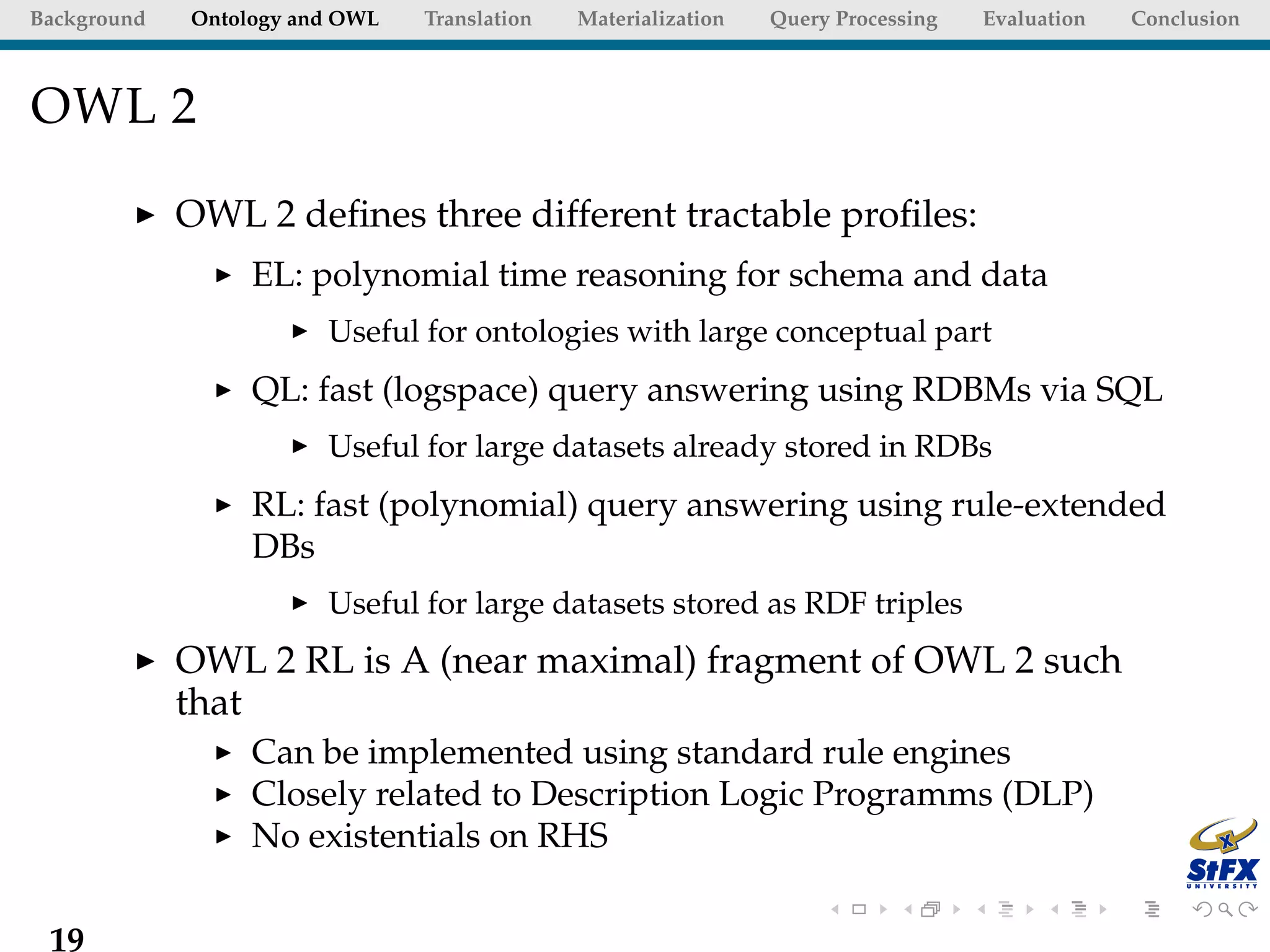
![Background Ontology and OWL Translation Materialization Query Processing Evaluation Conclusion
OWL 2RL
OWL profile that resembles an OWL-based rule language:
Intuition: subclass axioms in OWL RL can be understood as rule-like
implications with head (superclass) and body (subclass)
Different restrictions on subclasses and superclasses:
subclasses can only be class names, nominals,
conjunctsions, disjunctions, existentials if applied only to
subclass-type expressions
superclasses can be class names, universals or nominals;
also max. cardinalities of 0 or 1 are allowed, all with
superclass-type filler expressions only
Property domains and ranges only for subclass-type expressions; property
hierarchies, disjointness, inverses, (a)symmetry, transitivity, chains,
(inverse)functionality, irreflexivity fully supported
Disjoint classes and classes in keys need subclass-type expressions, equivalence
only for expressions that are sub- and superclass-type, no restrictions on equality
[P. Hitzler, M. Krotzsch, S. Rudolph: Knowledge Representation for the Semantic
¨
Web, KI 2009 (semantic-web-book.org)]
20](https://image.slidesharecdn.com/fhiesowlontdb-130205121850-phpapp02/75/OwlOntDB-A-Scalable-Reasoning-System-for-OWL-2-RL-Ontologies-with-Large-ABoxes-20-2048.jpg)
![Background Ontology and OWL Translation Materialization Query Processing Evaluation Conclusion
OWL 2RL E XAMPLES
∃parentOf. ∃parentOf. Grandfather
rule version: parentOf(x,y) ∧ parentOf(y,z) → Grandfather(x)
Orphan ∀ hasParent.Dead
rule version: Orphan(x) ∧ hasParent(x,y) → Dead(y)
Monogamous ≤ 1 married.Alive
rule version:
Monogamous(x) ∧ married(x,y) ∧ Alive(y) ∧ married(x,z) ∧ Alive(z) → y = z
childOf o childOf grandchildOf
rule version: childOf(x,y) ∧ childOf(y,z) → grandchildOf(x,z)
[P. Hitzler, M. Krotzsch, S. Rudolph: Knowledge Representation for the Semantic
¨
Web, KI 2009 (semantic-web-book.org)]
21](https://image.slidesharecdn.com/fhiesowlontdb-130205121850-phpapp02/75/OwlOntDB-A-Scalable-Reasoning-System-for-OWL-2-RL-Ontologies-with-Large-ABoxes-21-2048.jpg)
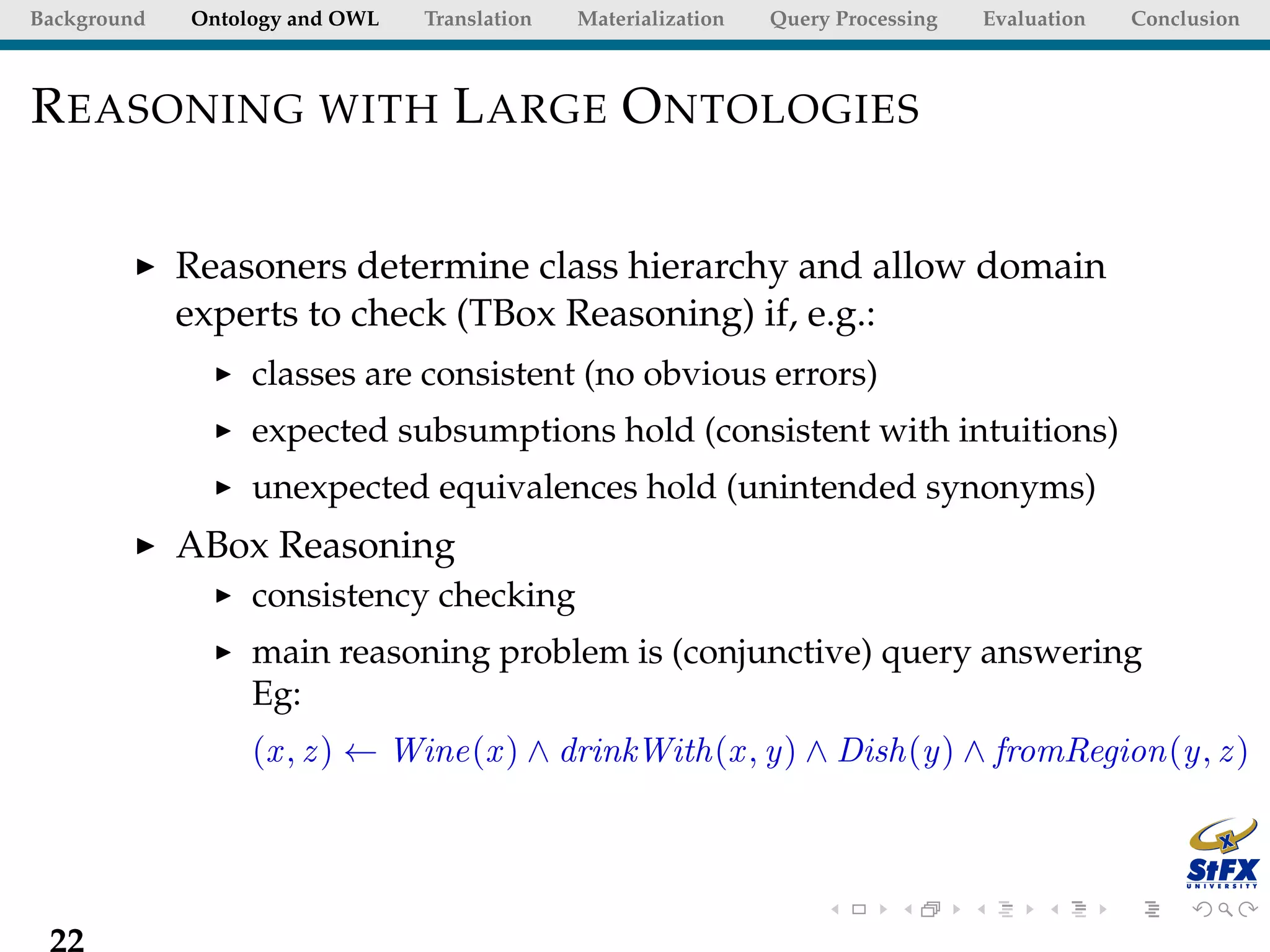
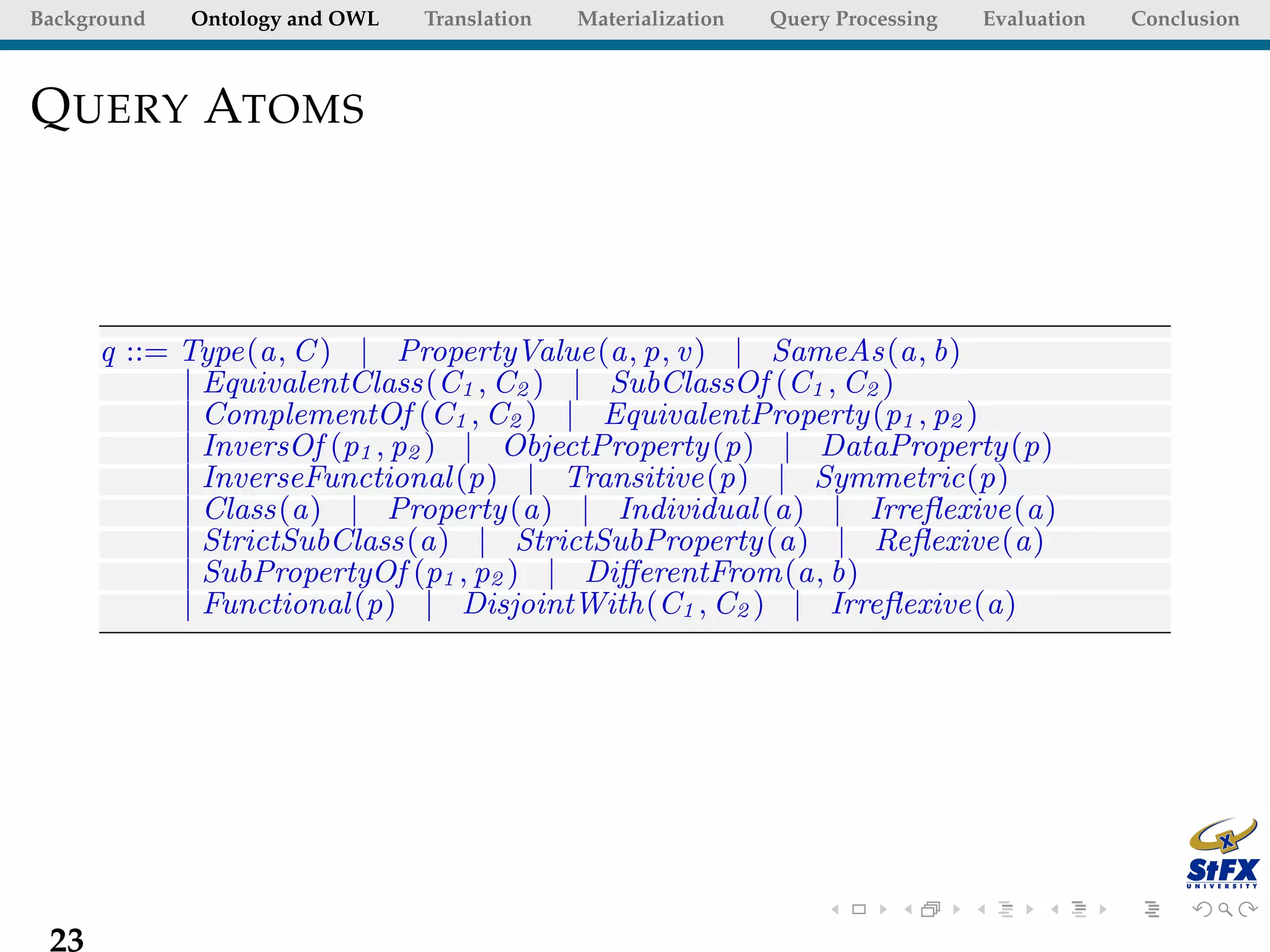

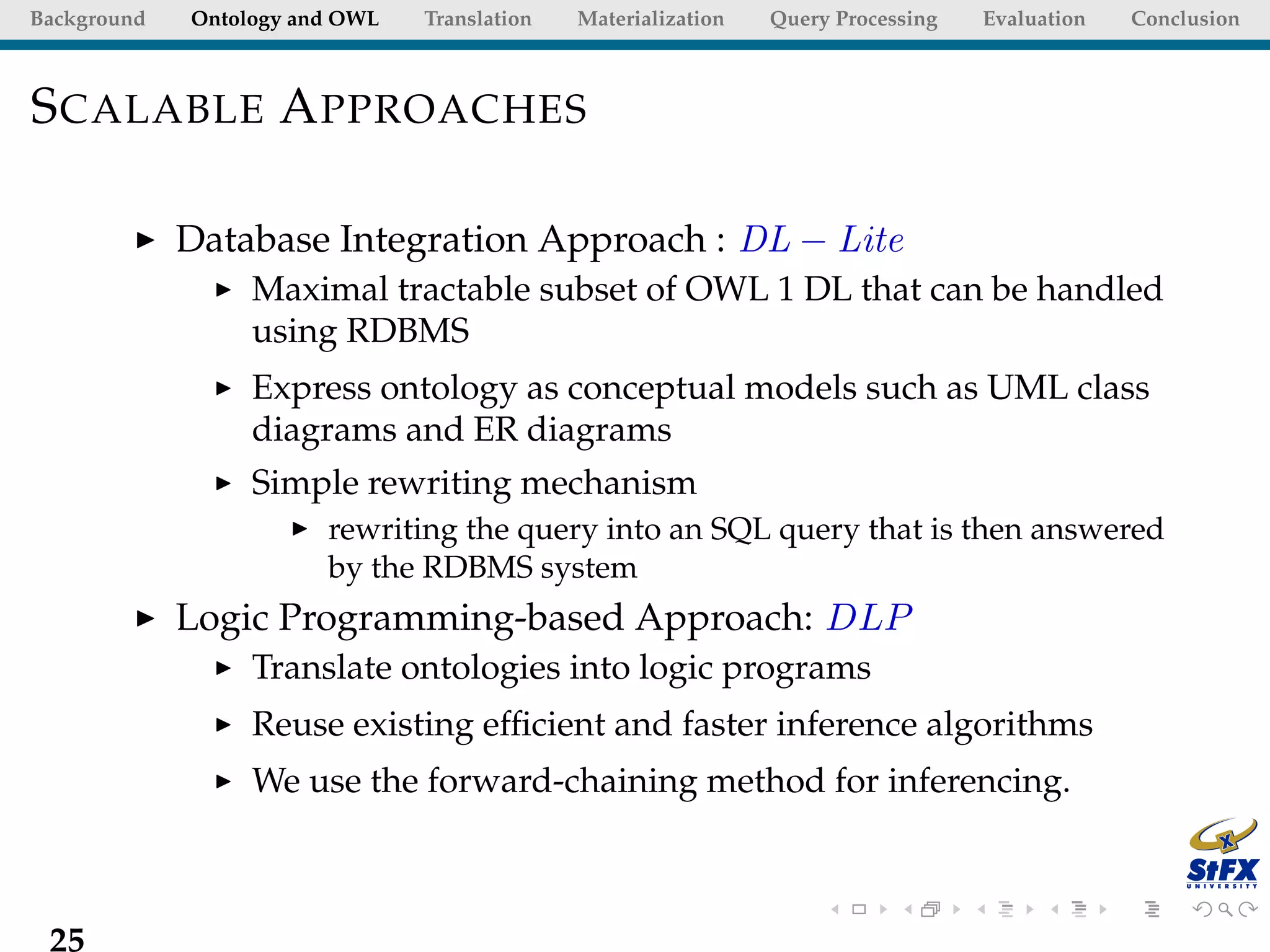

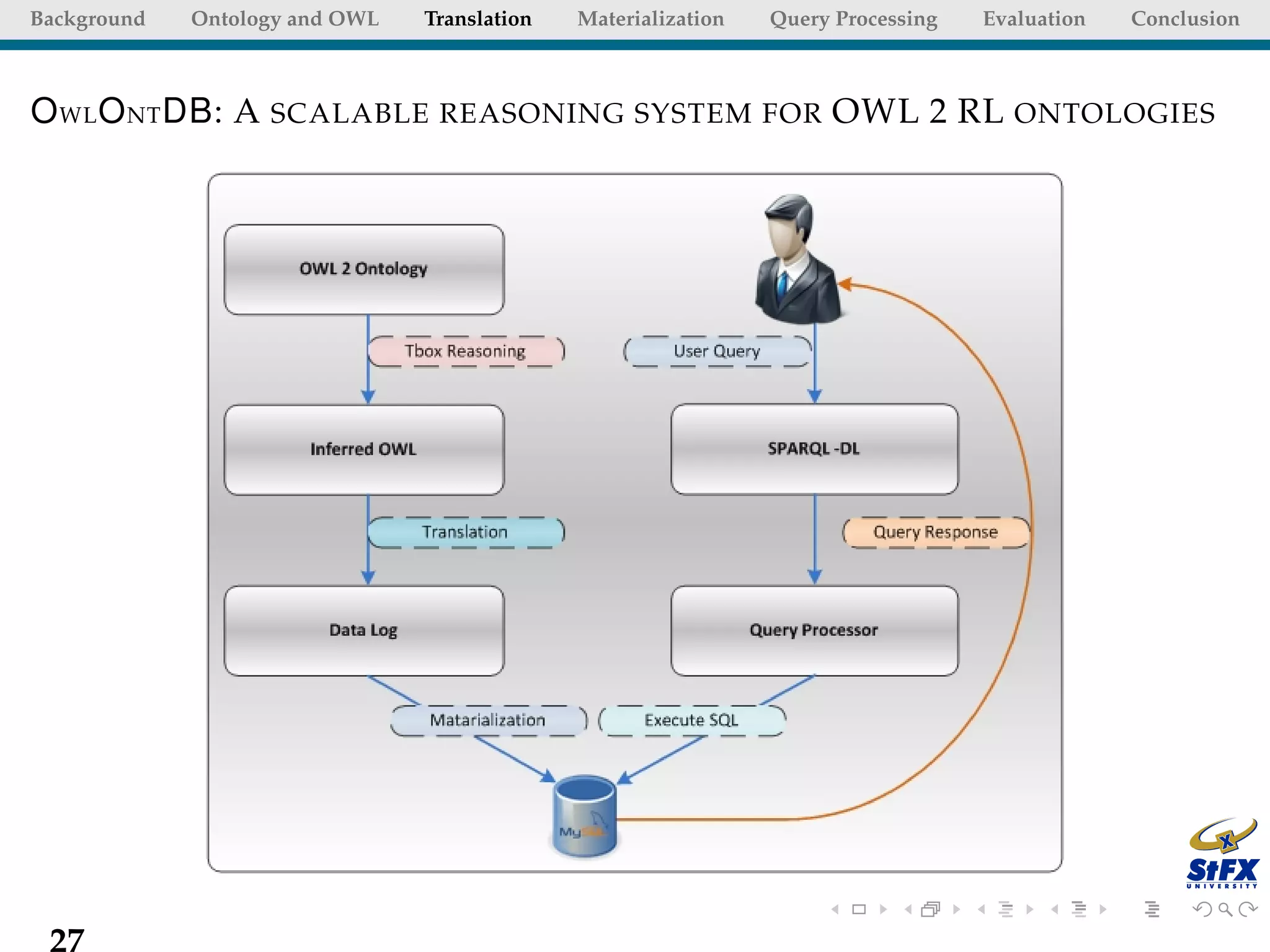
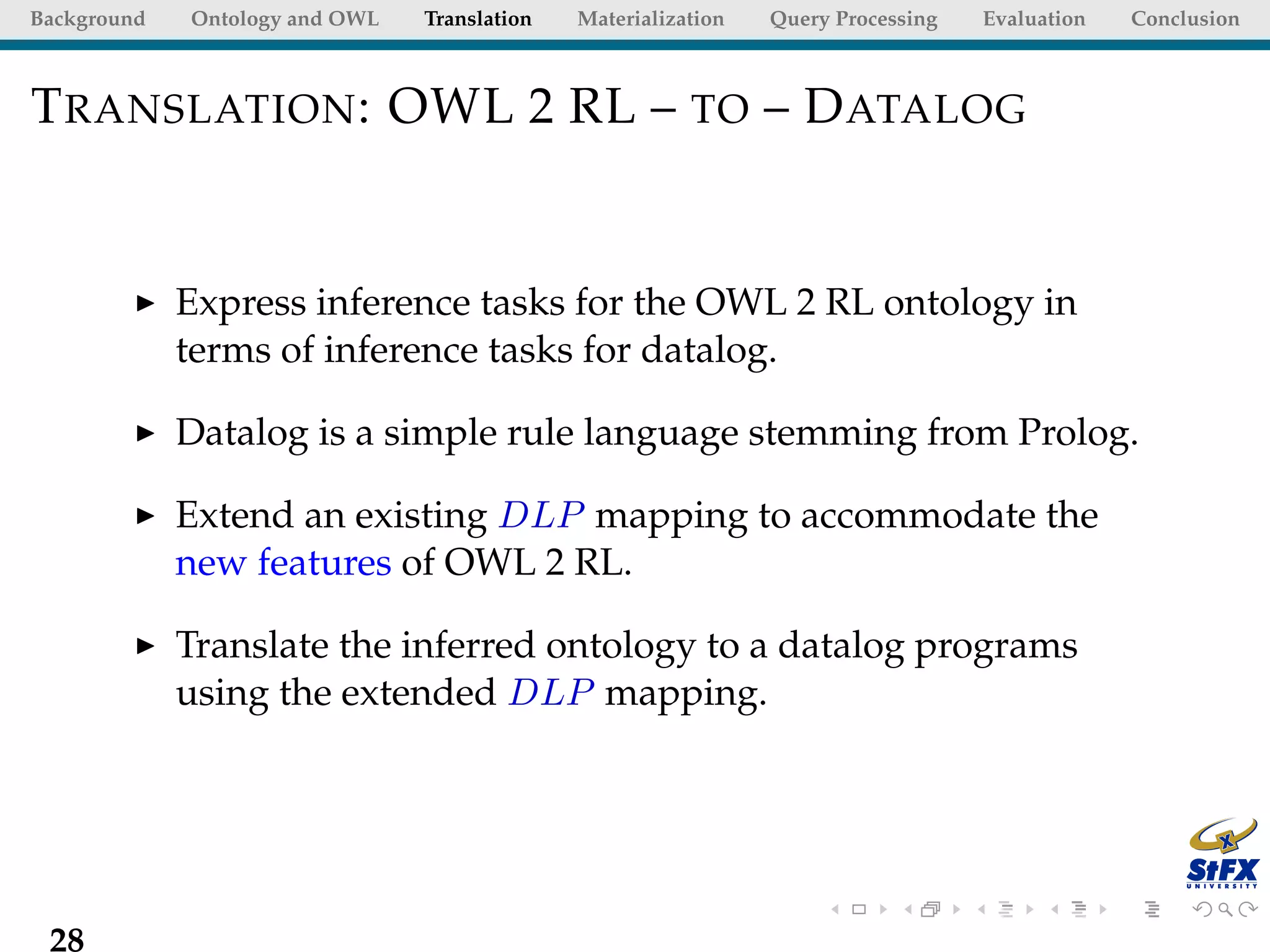

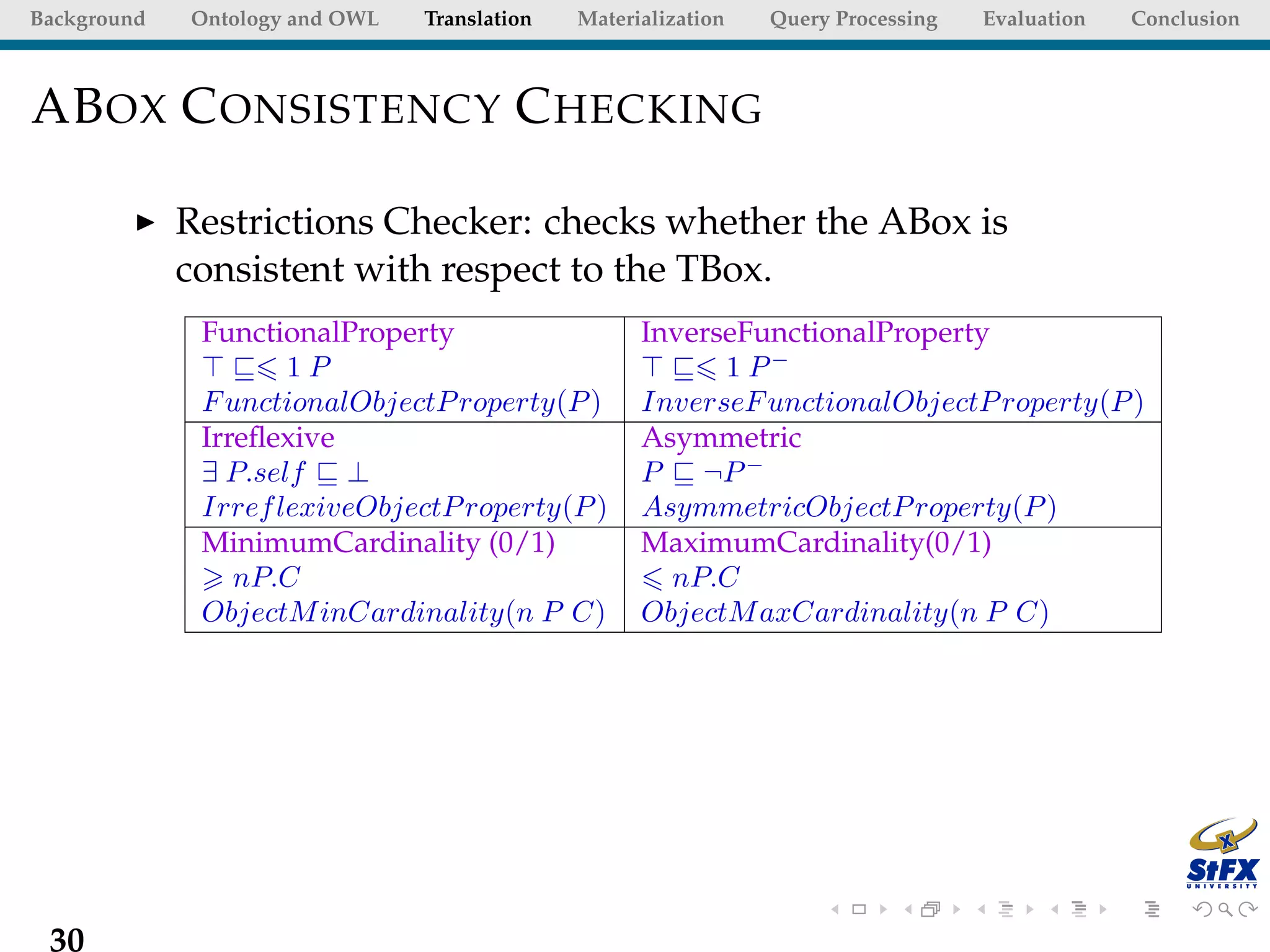
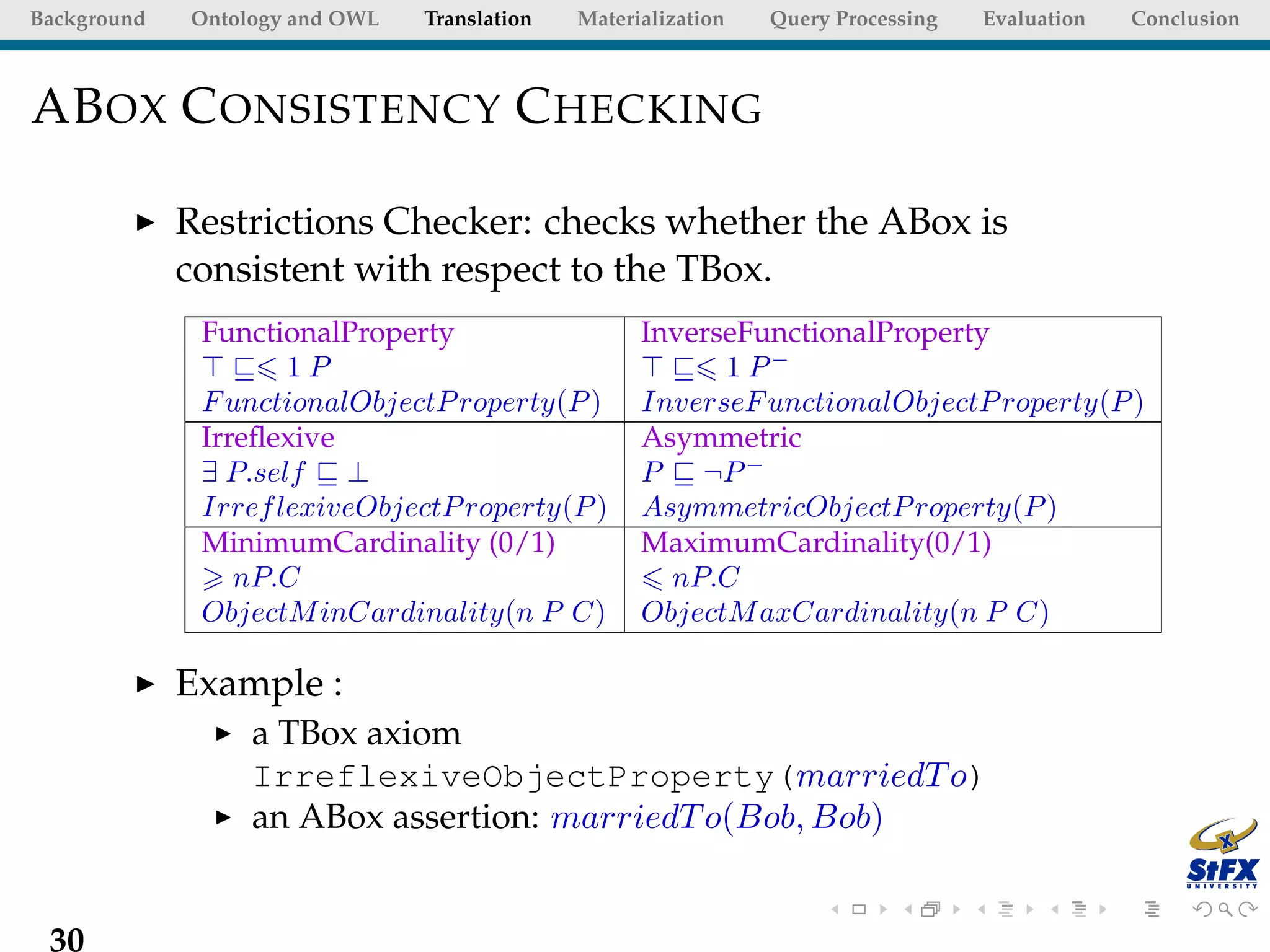
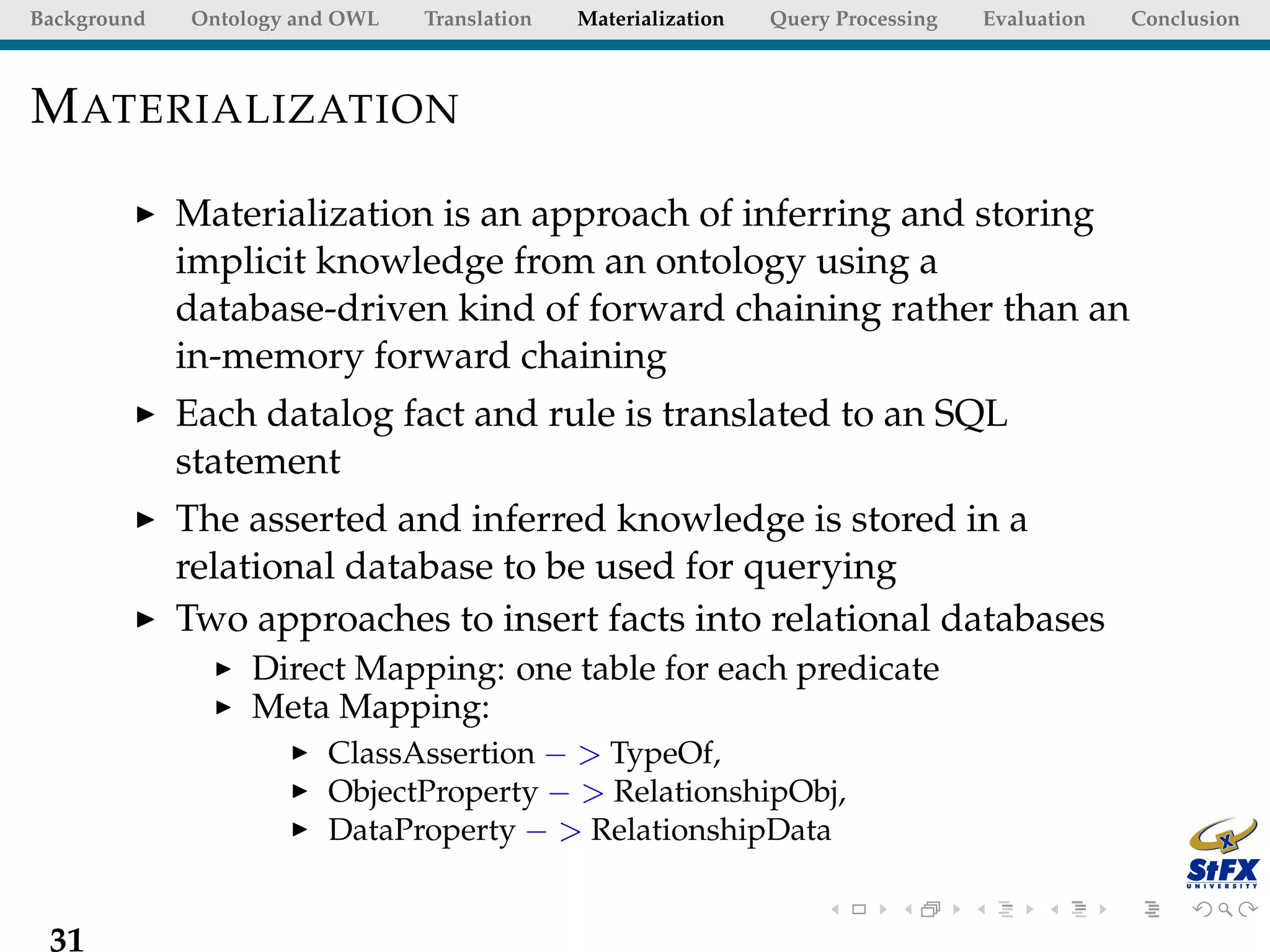
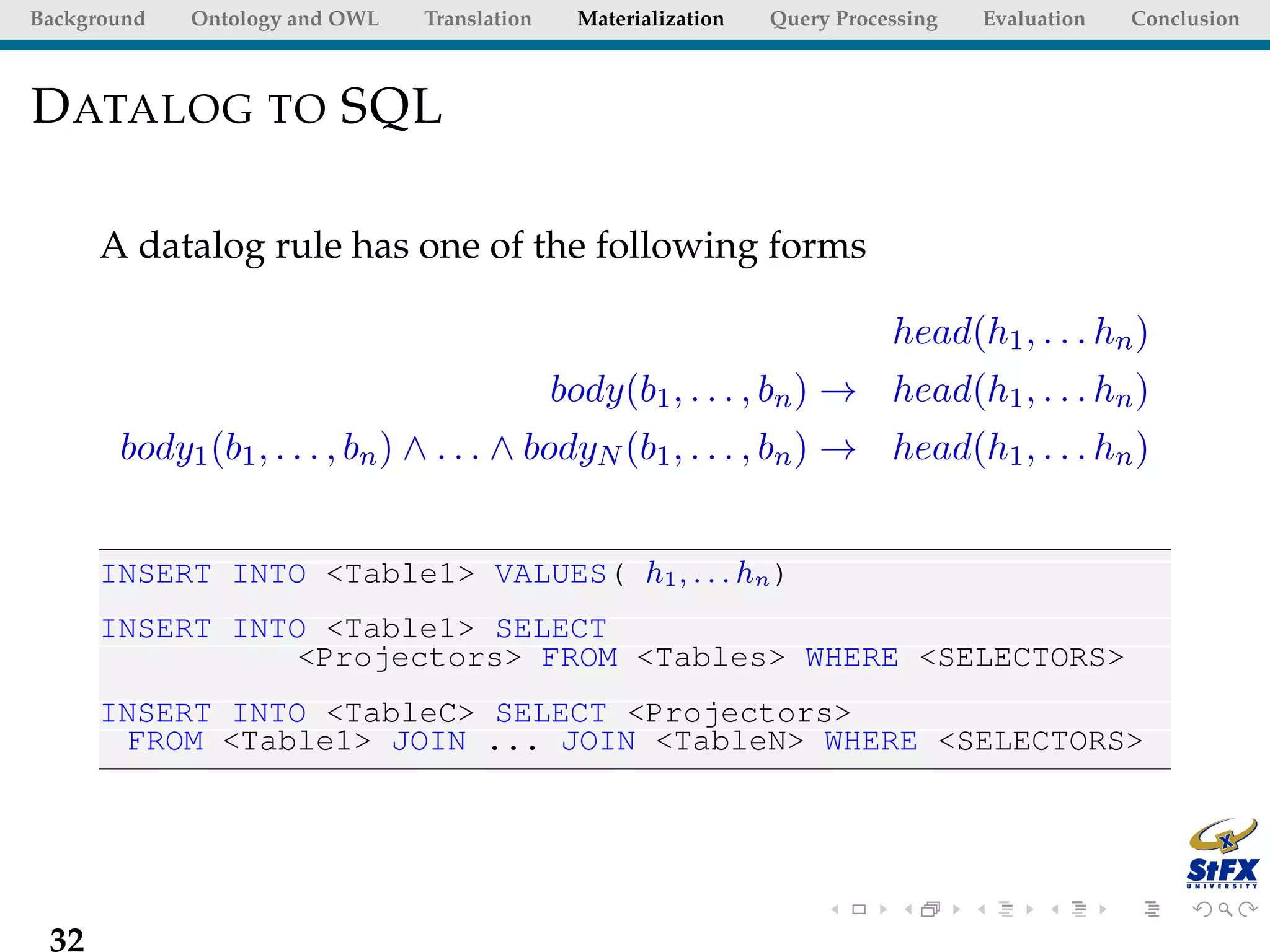
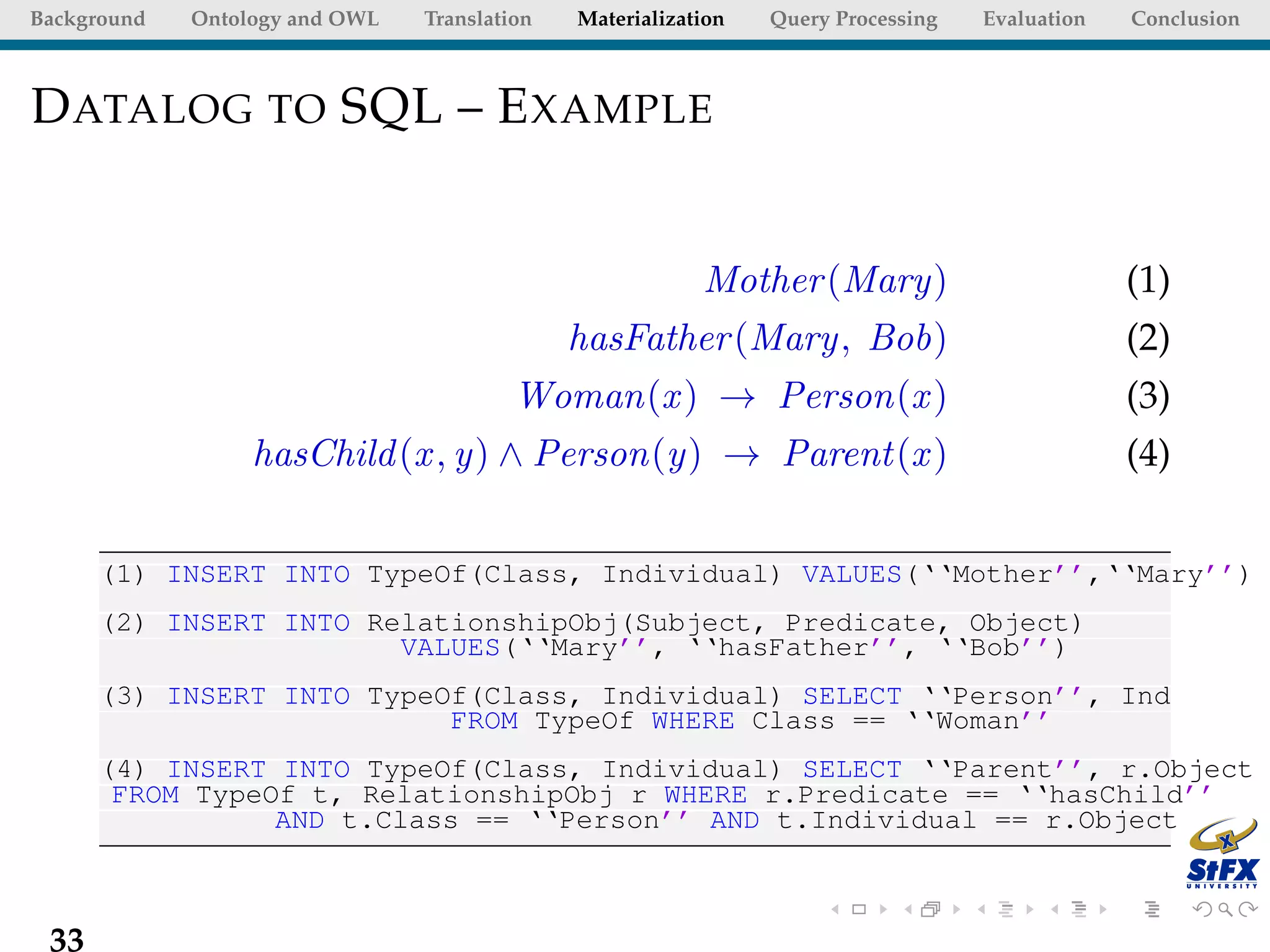
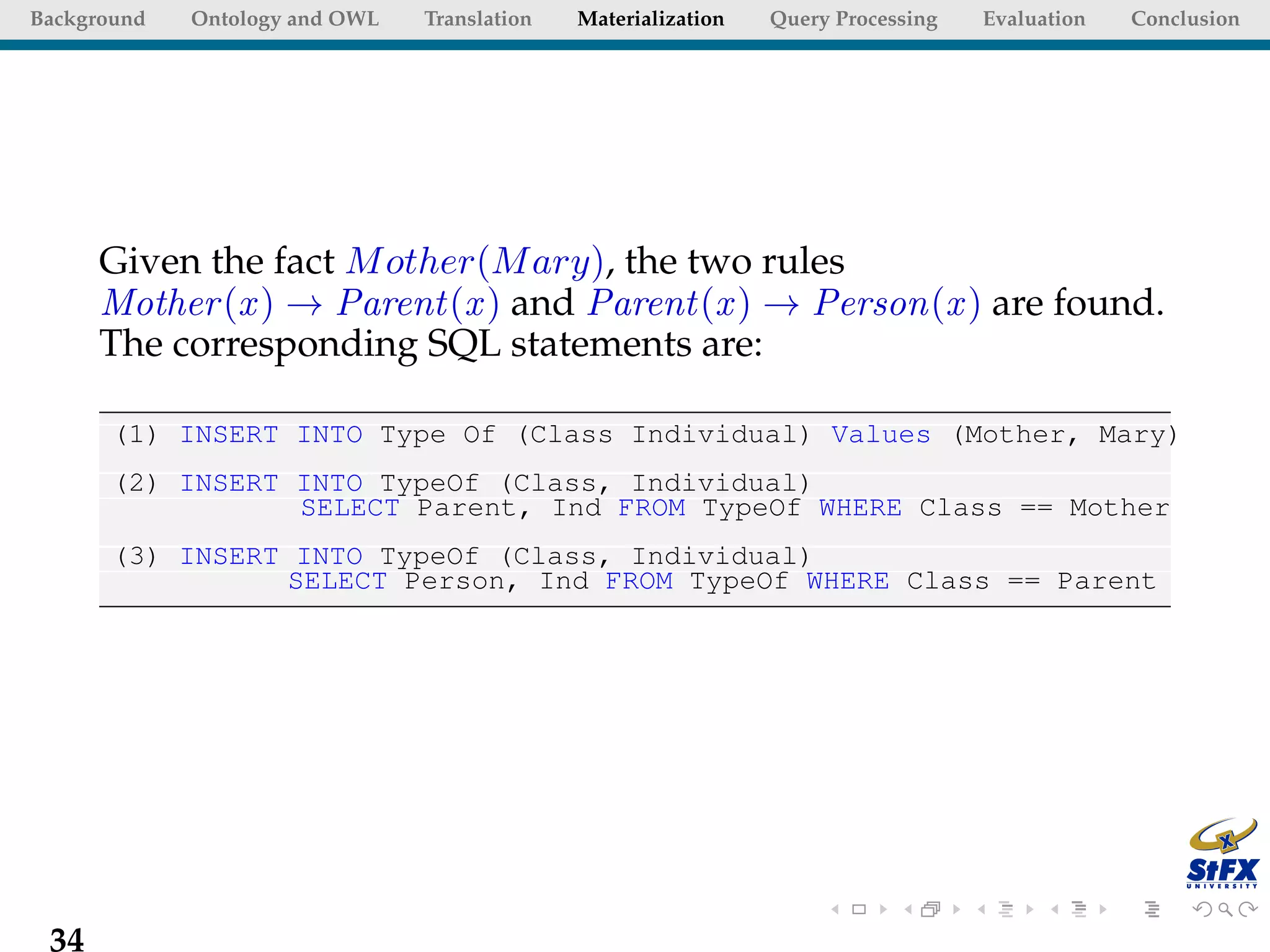
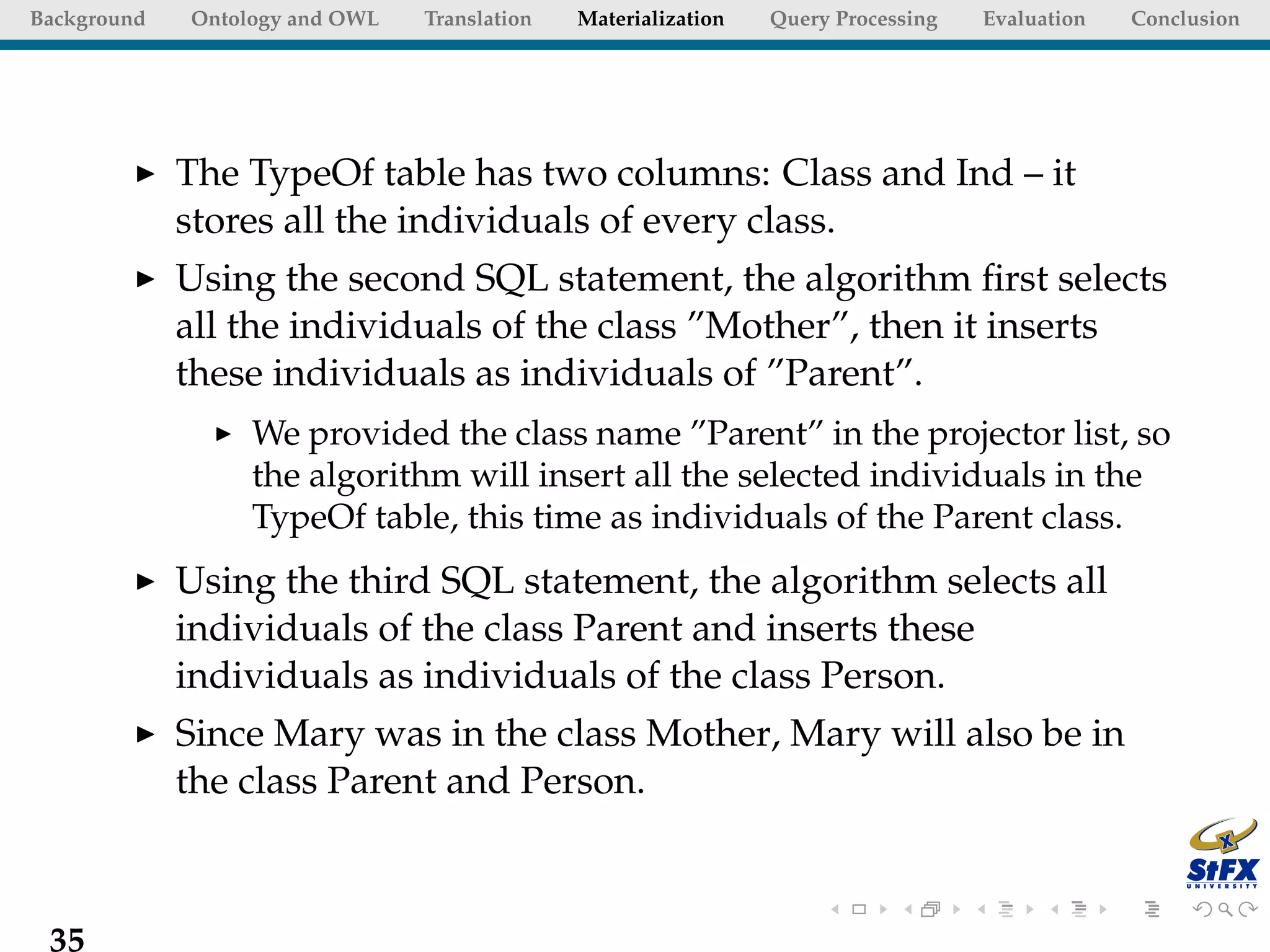
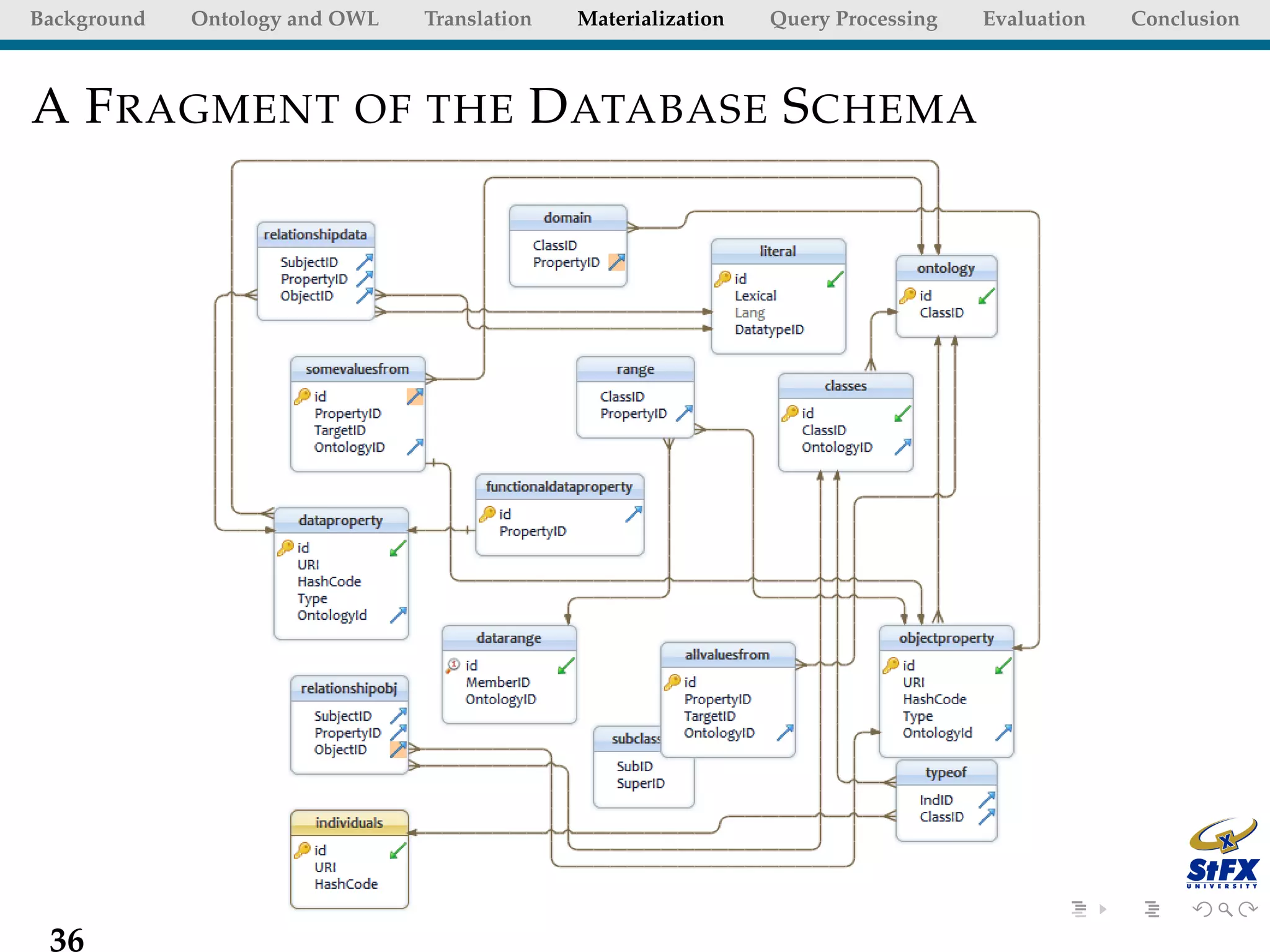
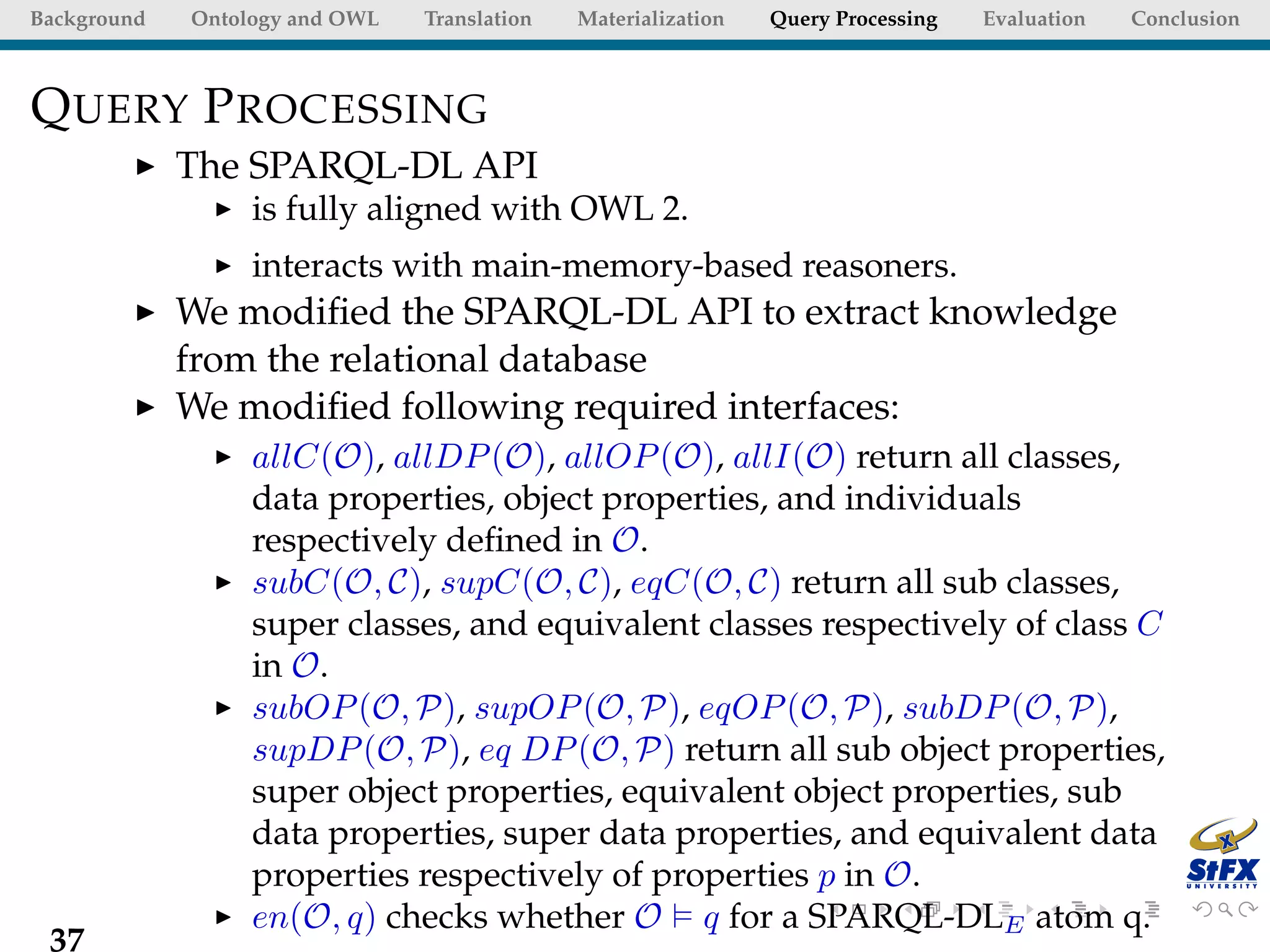

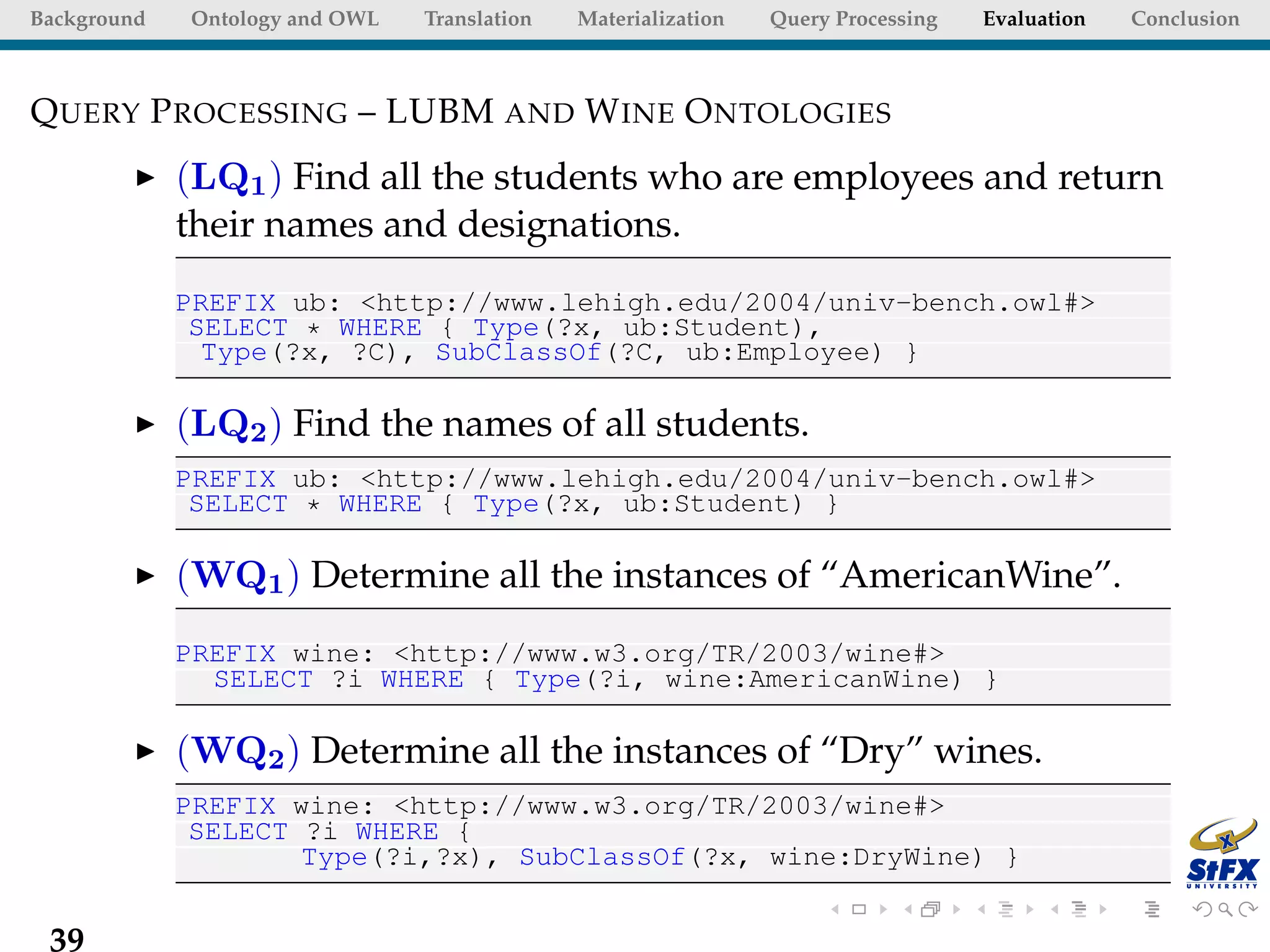
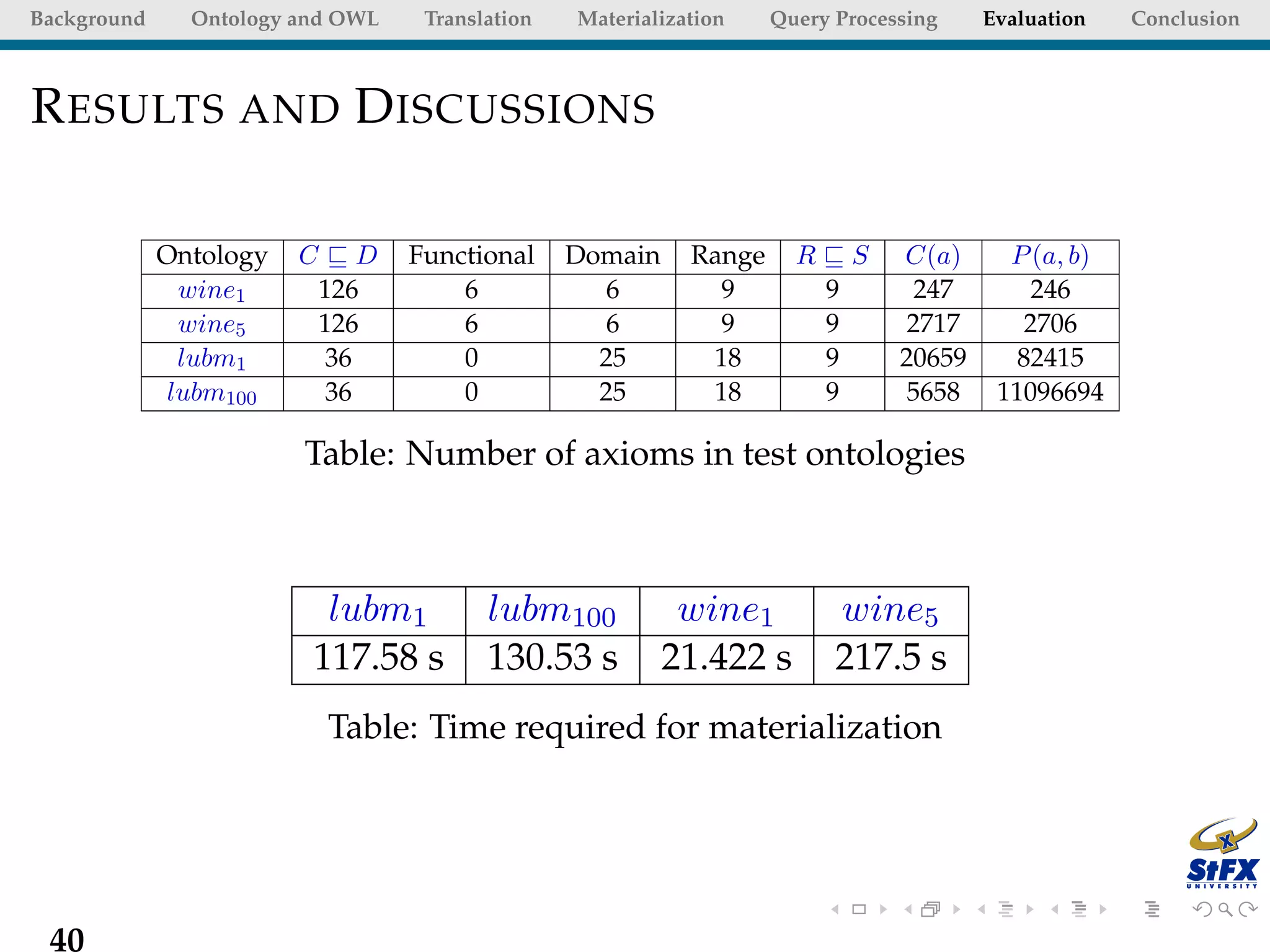
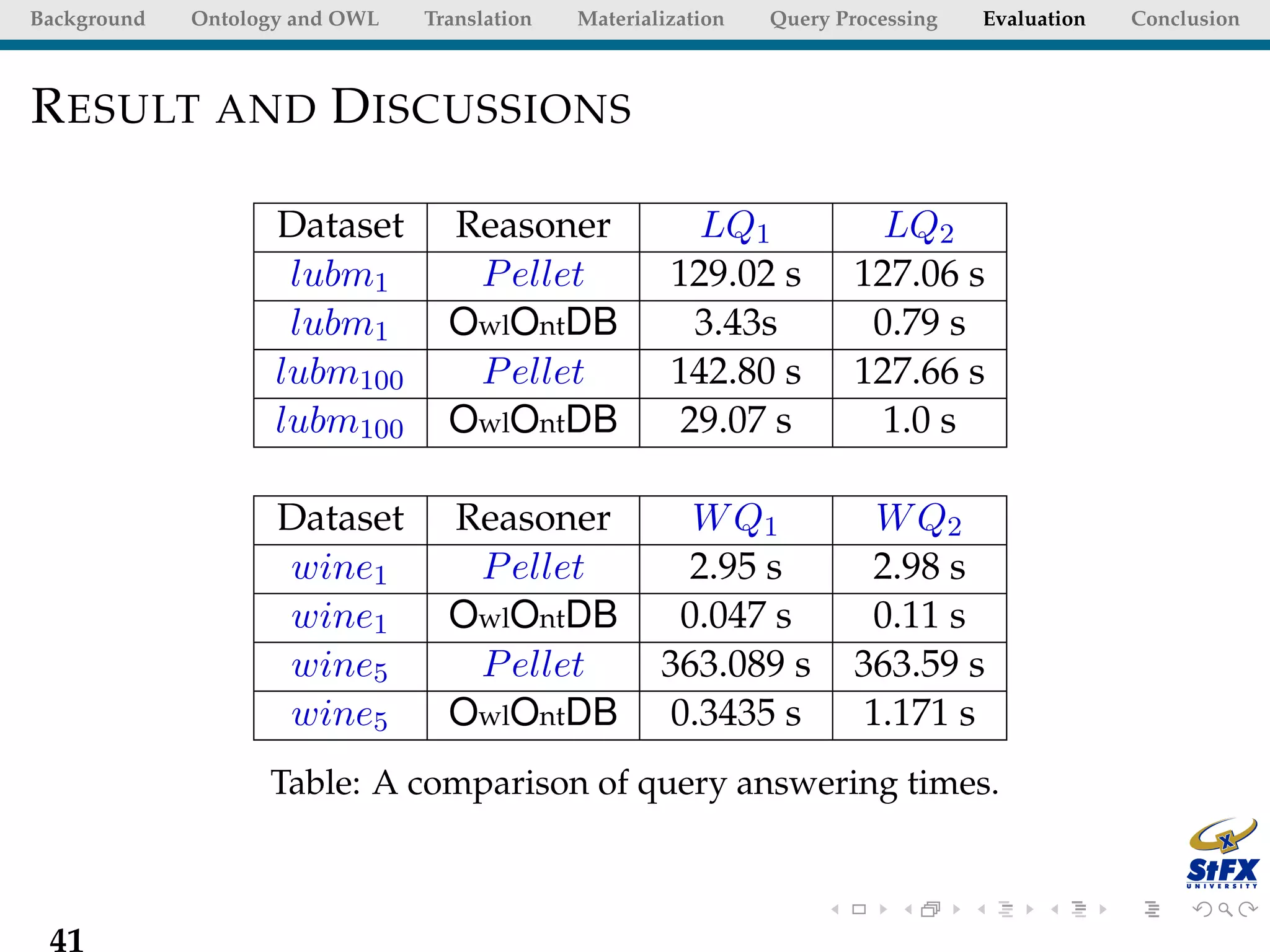
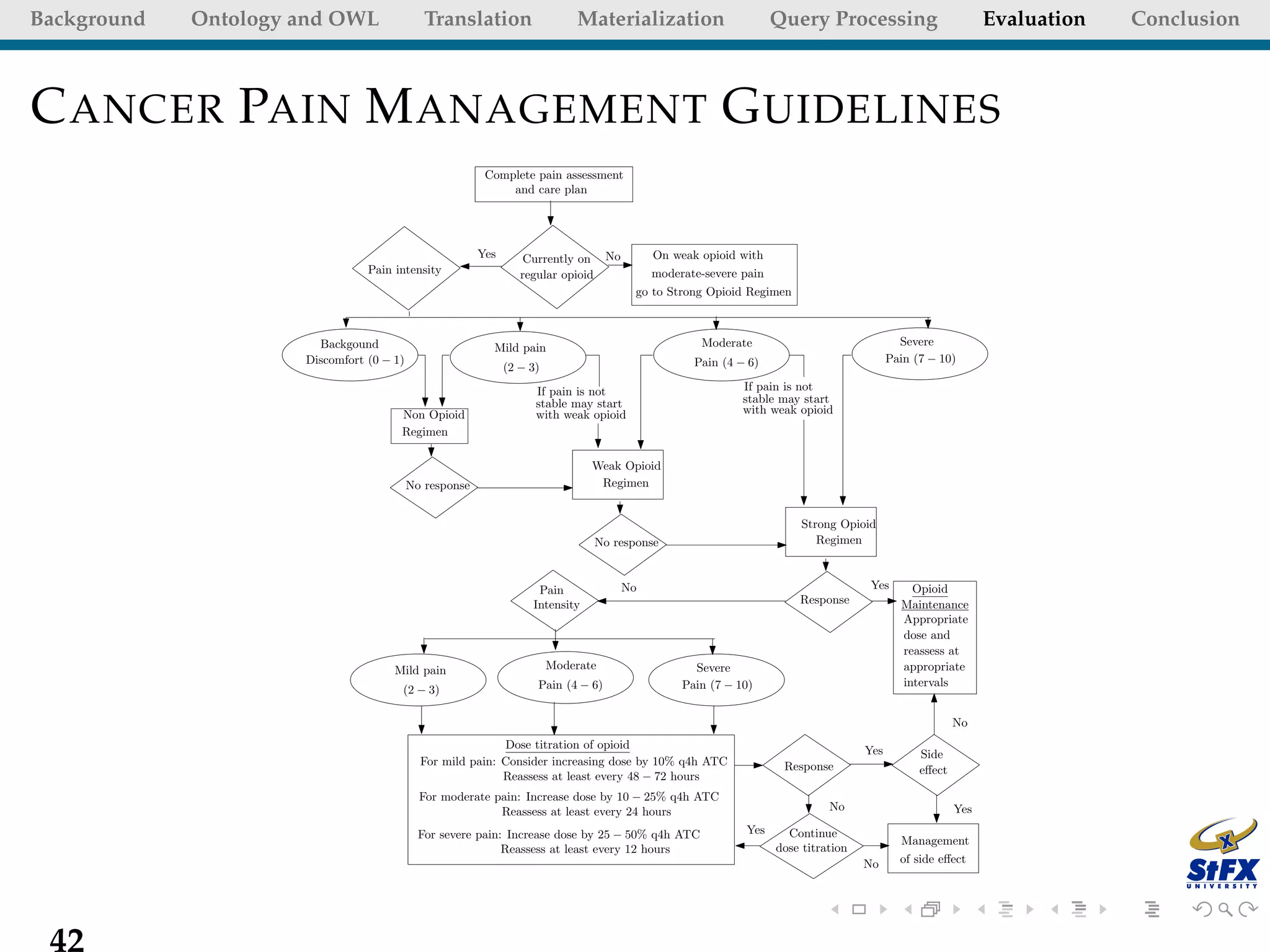
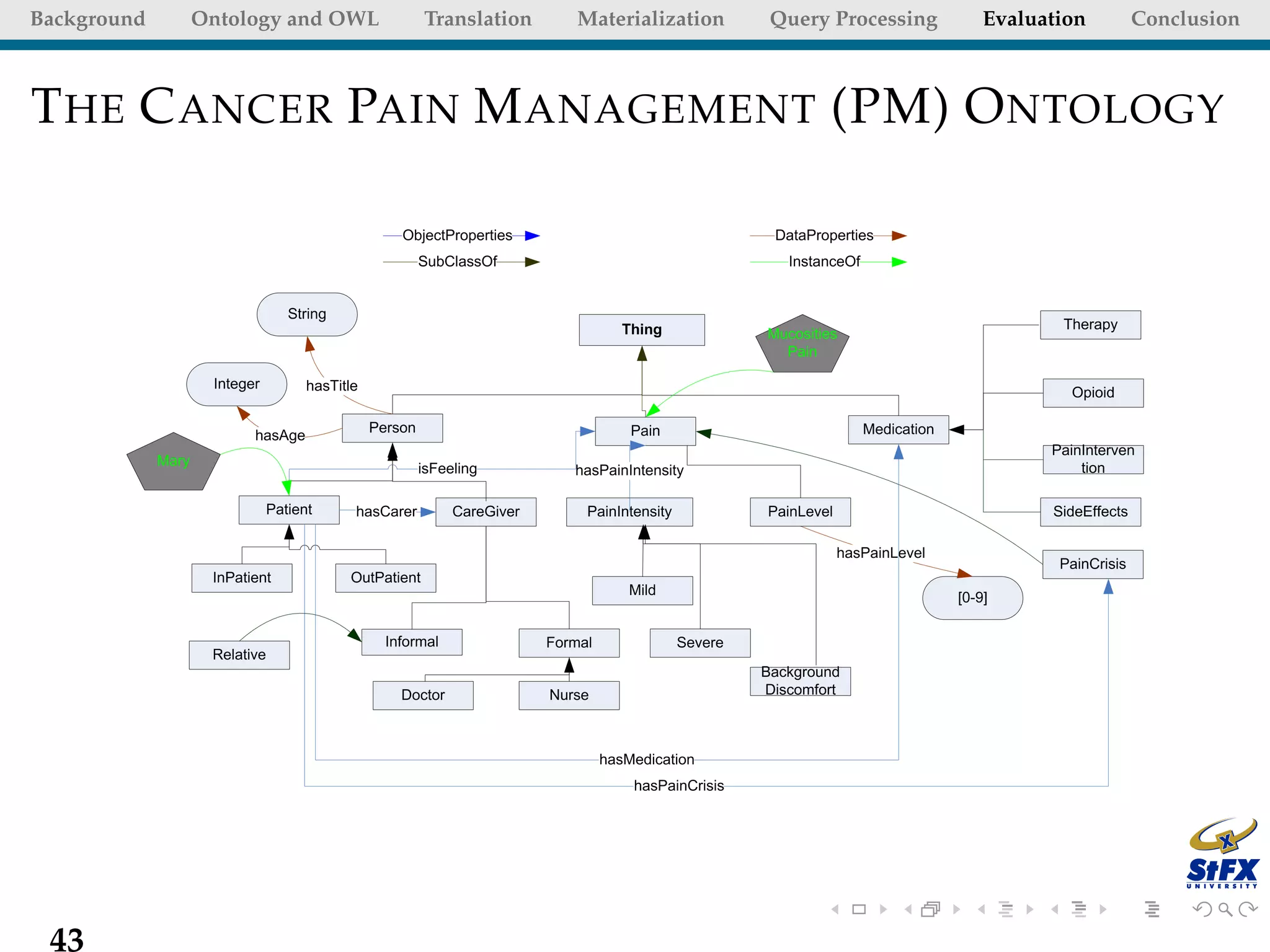
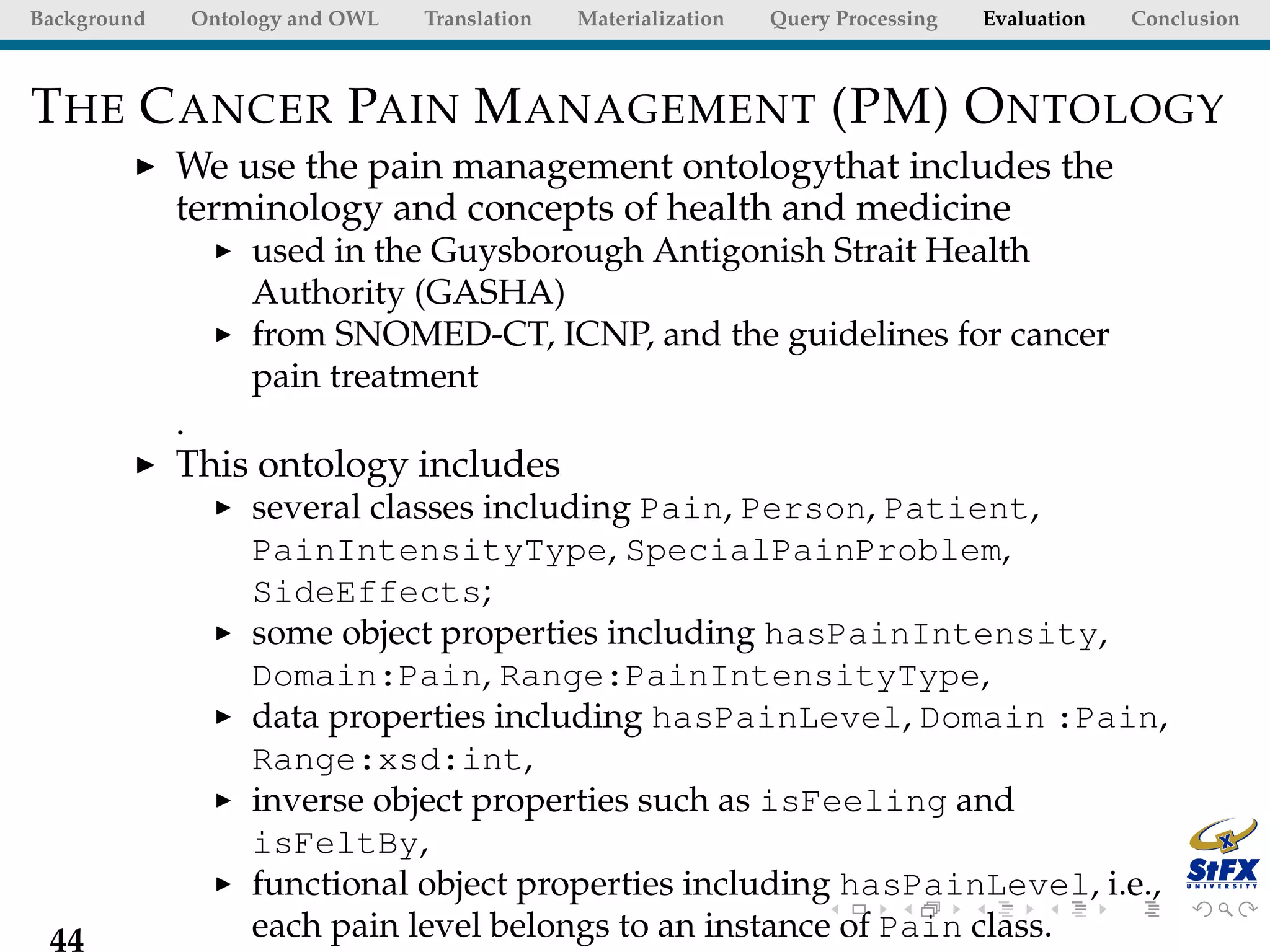
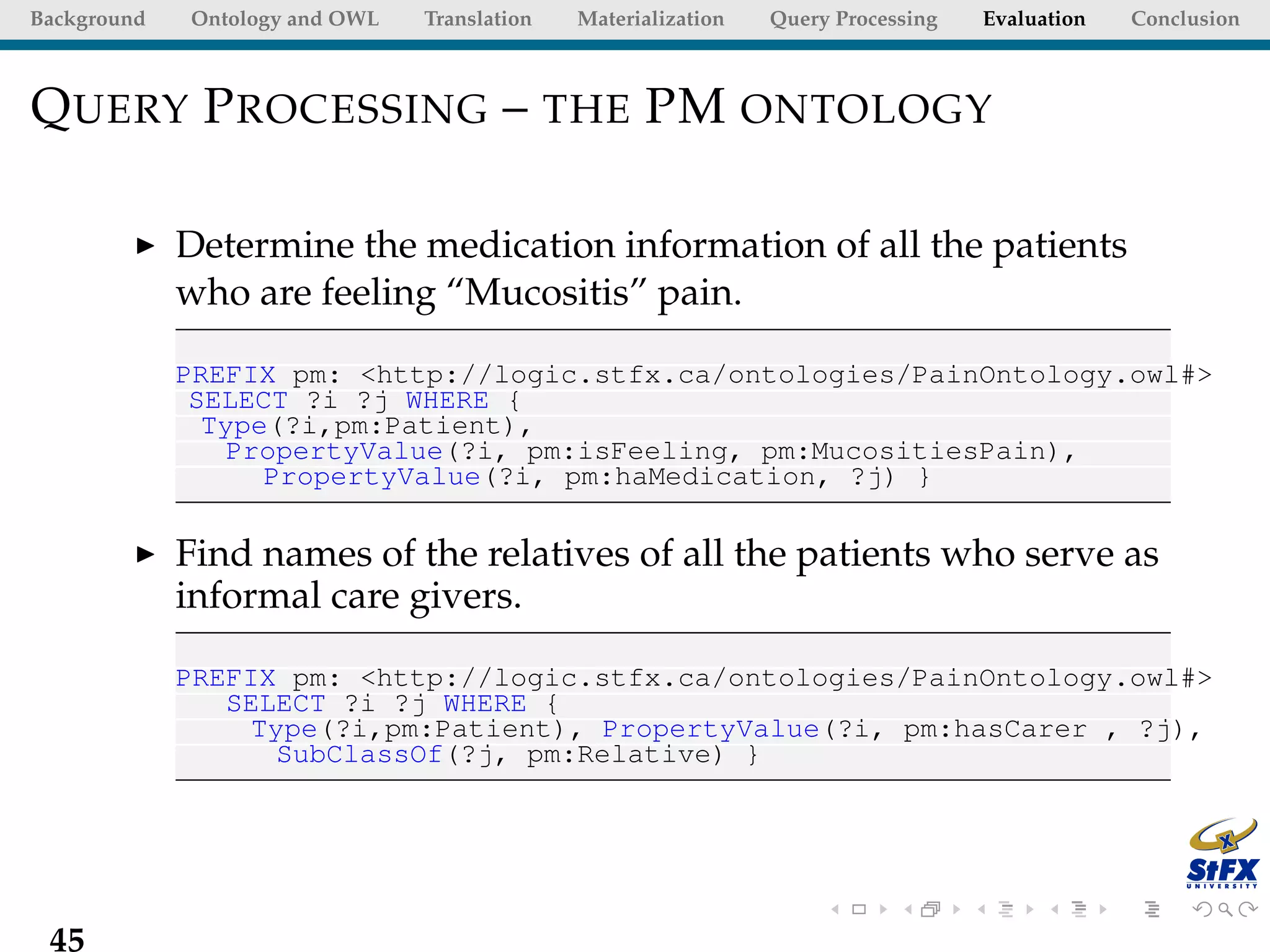
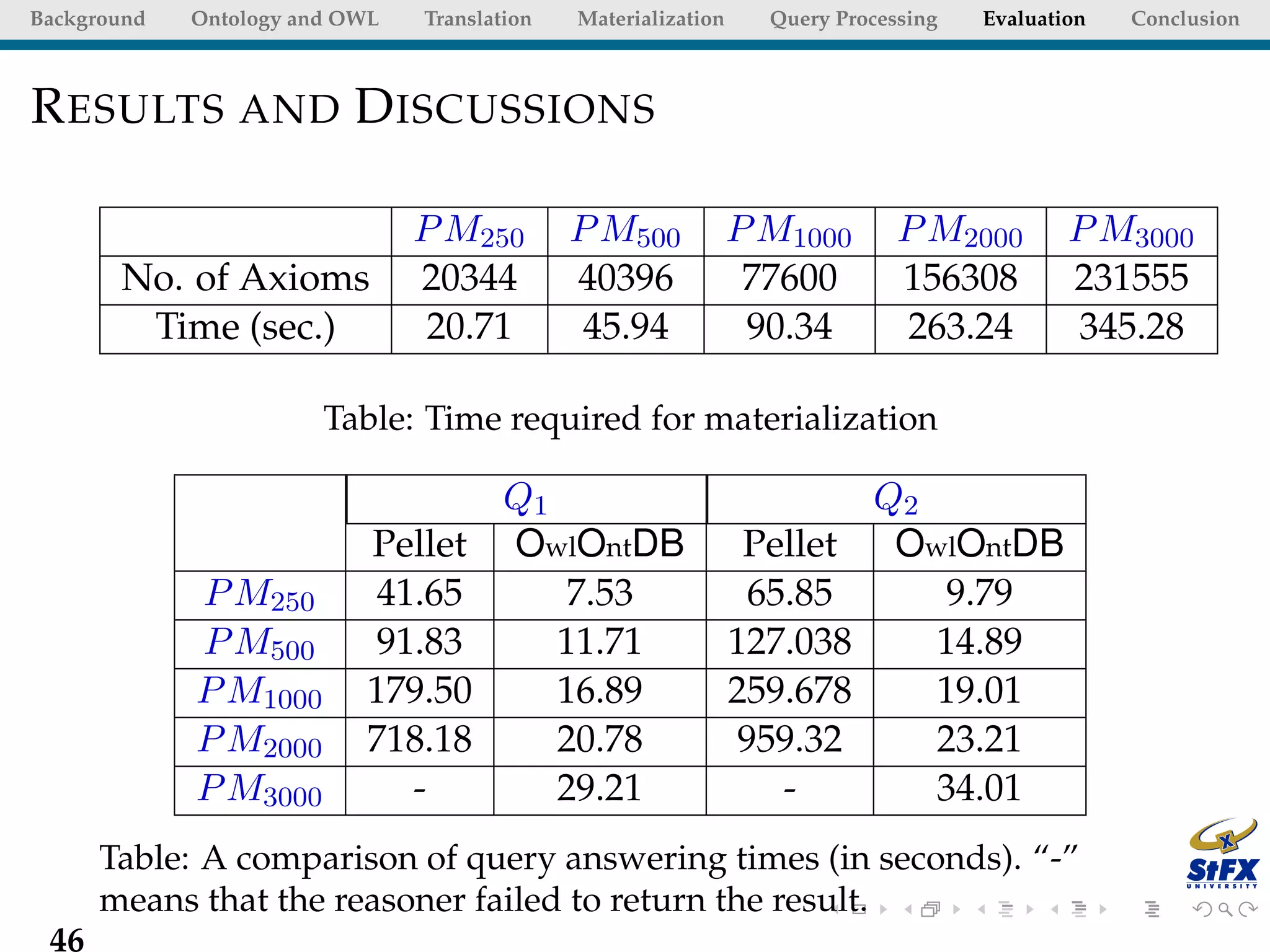
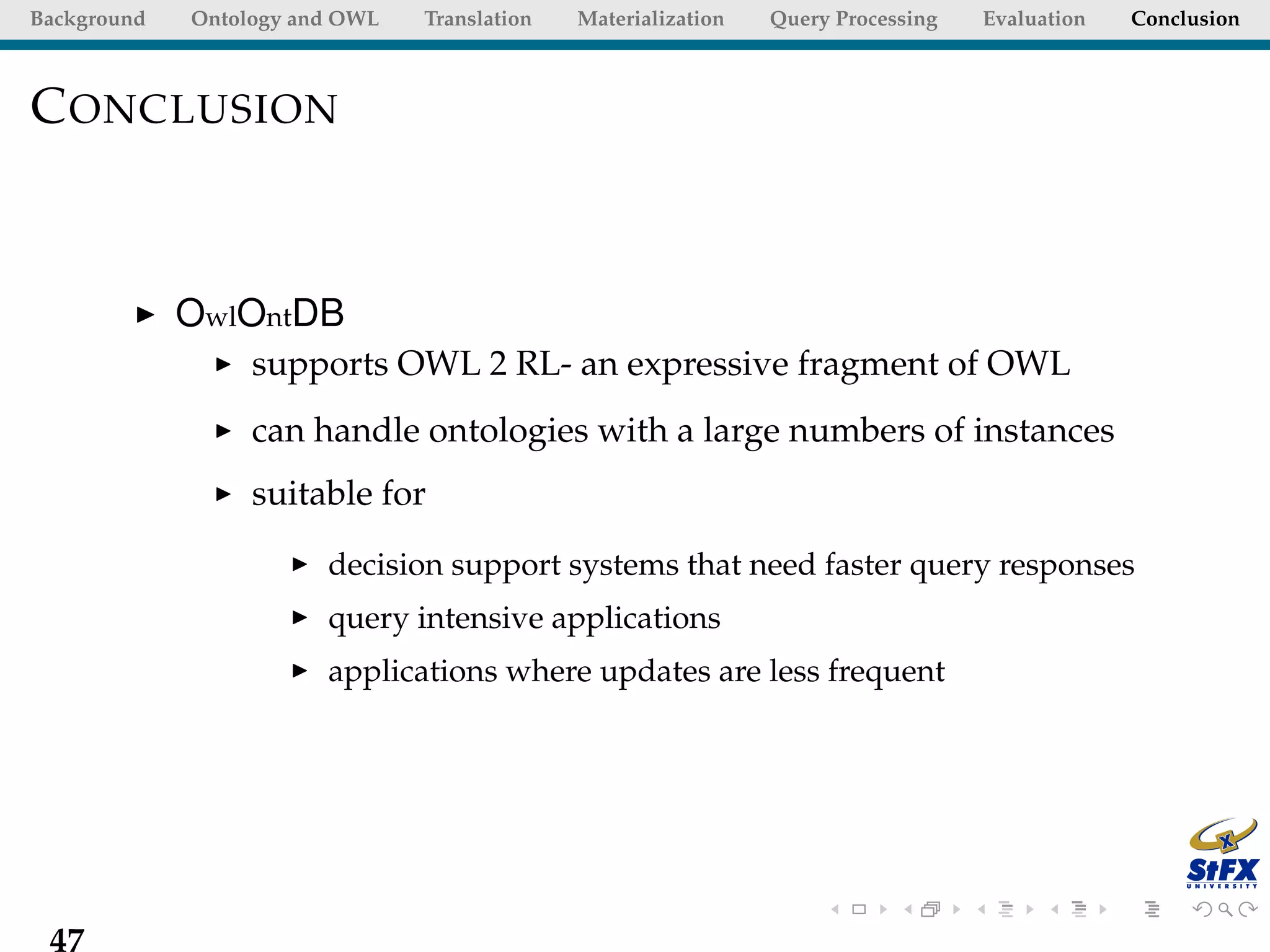
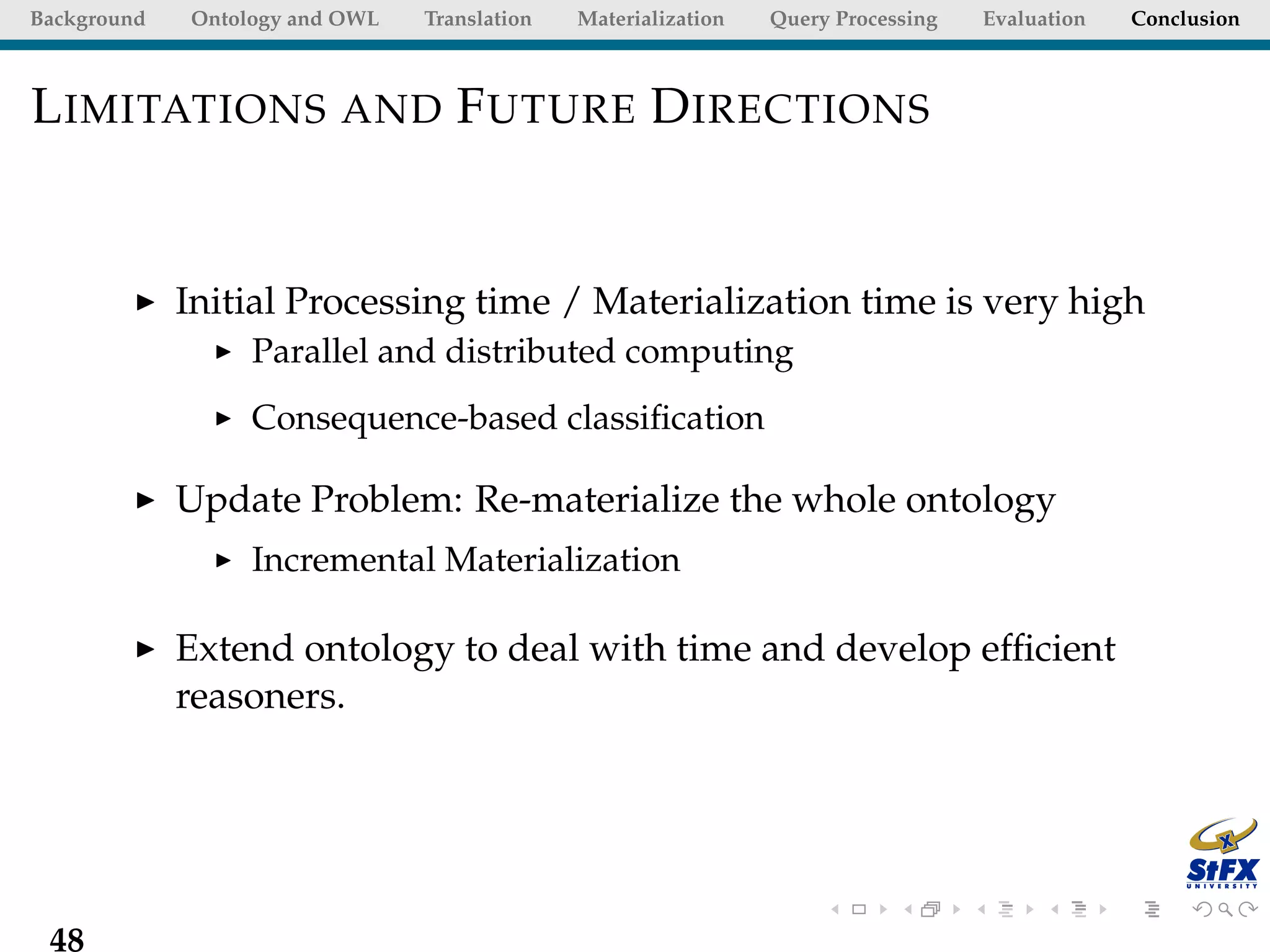
![Background Ontology and OWL Translation Materialization Query Processing Evaluation Conclusion
C ONTRIBUTIONS
Developed a translator to generate datalog programs from
OWL 2 RL ontologies by extending the DLP mapping.
[A. Rakib, R. U. Faruqui, and W. MacCaull, Verifying Resource Requirements for
Ontology-Driven Rule-Based Agents, Lecture Notes in Computer Science, 2012, Volume
7153, Foundations of Information and Knowledge Systems (FoIKS 2012, Kiel,
Germany), Pages 312-331.]
49](https://image.slidesharecdn.com/fhiesowlontdb-130205121850-phpapp02/75/OwlOntDB-A-Scalable-Reasoning-System-for-OWL-2-RL-Ontologies-with-Large-ABoxes-50-2048.jpg)
![Background Ontology and OWL Translation Materialization Query Processing Evaluation Conclusion
C ONTRIBUTIONS
Developed a translator to generate datalog programs from
OWL 2 RL ontologies by extending the DLP mapping.
Developed a materialized algorithm that performs a
forward chaining over a datalog program, then translates
the resulting program to a set of SQL statements.
[A. Rakib, R. U. Faruqui, and W. MacCaull, Verifying Resource Requirements for
Ontology-Driven Rule-Based Agents, Lecture Notes in Computer Science, 2012, Volume
7153, Foundations of Information and Knowledge Systems (FoIKS 2012, Kiel,
Germany), Pages 312-331.]
49](https://image.slidesharecdn.com/fhiesowlontdb-130205121850-phpapp02/75/OwlOntDB-A-Scalable-Reasoning-System-for-OWL-2-RL-Ontologies-with-Large-ABoxes-51-2048.jpg)
![Background Ontology and OWL Translation Materialization Query Processing Evaluation Conclusion
C ONTRIBUTIONS
Developed a translator to generate datalog programs from
OWL 2 RL ontologies by extending the DLP mapping.
Developed a materialized algorithm that performs a
forward chaining over a datalog program, then translates
the resulting program to a set of SQL statements.
Modified an existing SPAQRL-DL API
[A. Rakib, R. U. Faruqui, and W. MacCaull, Verifying Resource Requirements for
Ontology-Driven Rule-Based Agents, Lecture Notes in Computer Science, 2012, Volume
7153, Foundations of Information and Knowledge Systems (FoIKS 2012, Kiel,
Germany), Pages 312-331.]
49](https://image.slidesharecdn.com/fhiesowlontdb-130205121850-phpapp02/75/OwlOntDB-A-Scalable-Reasoning-System-for-OWL-2-RL-Ontologies-with-Large-ABoxes-52-2048.jpg)
